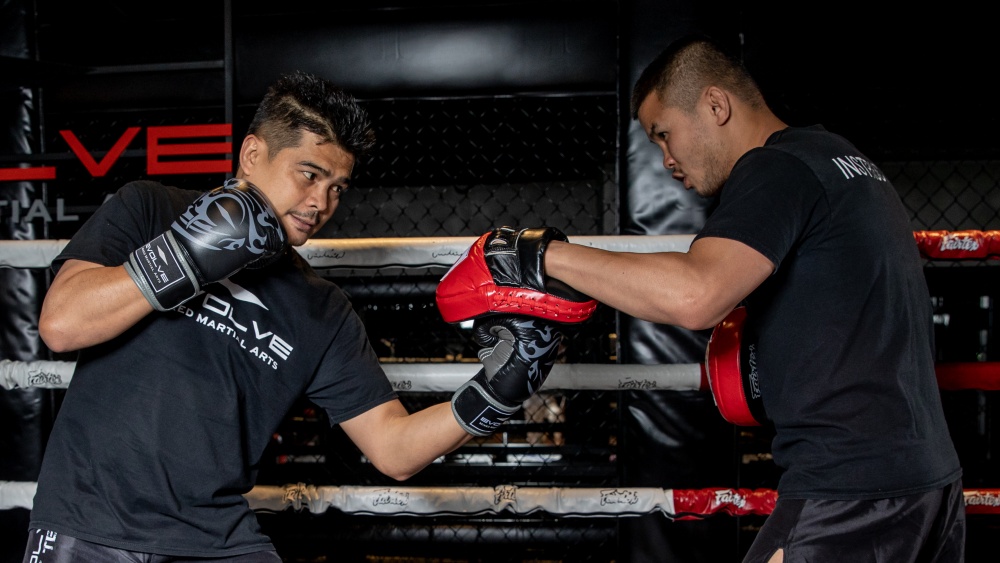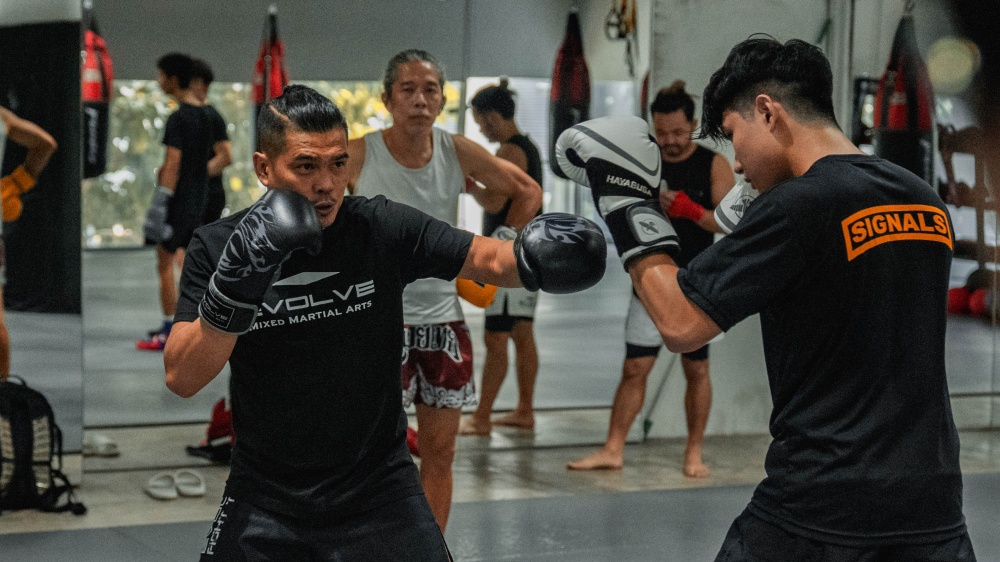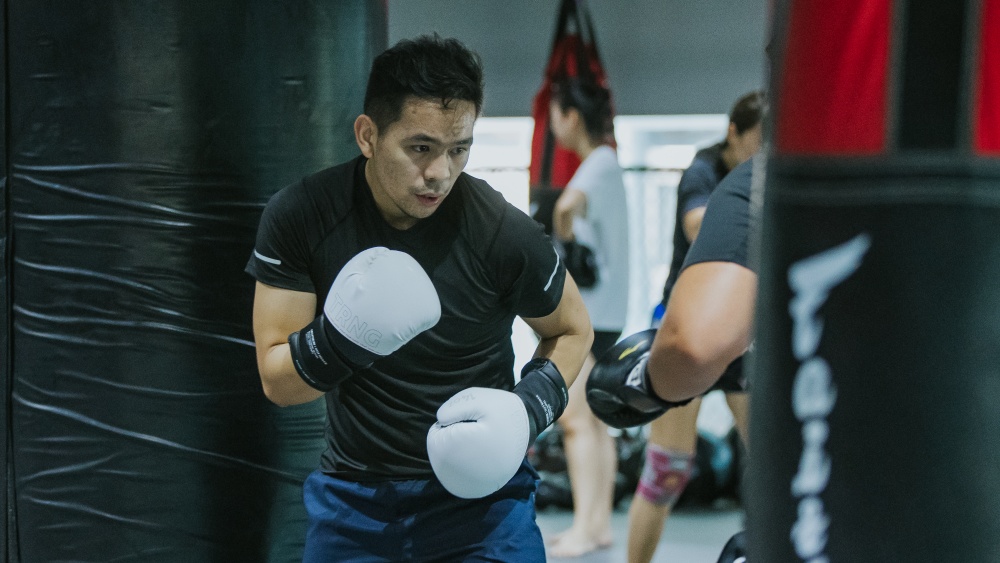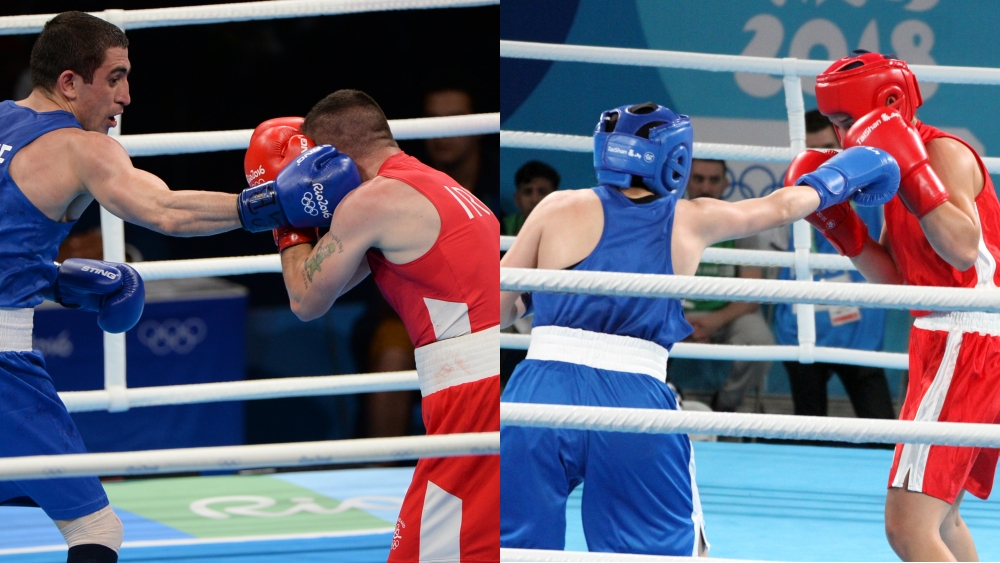Boxing is a tough sport that is by no means for the faint-hearted. It involves punching and being punched, with the ever-present possibility of either you or your opponent getting knocked out cold. To casual fans, combat sports are considered brutal by nature, which is a part of the reason why watching a fight live is so exciting. However, there is so much more to boxing than straight-up brutality: it is an art form. The sweet science has a very elegant quality to it.
There is nothing more impressive than watching a boxer string punches together in a way that makes it seem effortless, using counters and defensive maneuvers to dominate their unfortunate opponent. It’s impressive to watch, but to actually know the techniques yourself, put in the practice, and then finally and successfully put what you have learned during practice in an actual fight, is a completely different kettle of fish.
In this complete beginner’s guide to Boxing, you’ll learn all about how you can easily start to thrive in the Boxing ring – even if you’ve never thrown a punch in your life – and how you can get started to enjoy the sweet science. From stances to footwork to the various strikes and styles found in the sport, allow us to take you on a journey through everything you need to know to get you up and running.
Chapter 1: Stance And Footwork
To those who have never stepped foot in the square circle, Boxing is often regarded as a brutal and bloody sport. In reality, this isn’t the case.
Sure, the sport does have sluggers and swingers – the type of fighters that prefers to stand in the middle of the ring and trade bombs with little to no technique – but why take unnecessary damage when you can use your head and outsmart your foe with boxing fundamentals?
Before anything else, the first thing you need to decide is what stance you are more comfortable with. The vast majority of fighters are orthodox, and the reason for this is that most people are right-handed. Generally, boxers prefer to have their more powerful hand at the rear. This means that in an orthodox stance, you should have your left hand and foot forward, or if you prefer the southpaw stance (generally favored by lefties) you will stand with your right hand and right foot forward.
Not all fighters prefer their power hand at the rear. There are a number of exceptions such as Henry Cooper and Vasyl Lomachenko that favor having their power hand up front. The advantage of having your dominant hand forward is you will have a very powerful jab, with the downside, of course, being that your rear hand won’t have as much stopping power as it would the other way round, though this is something you can build up over time.
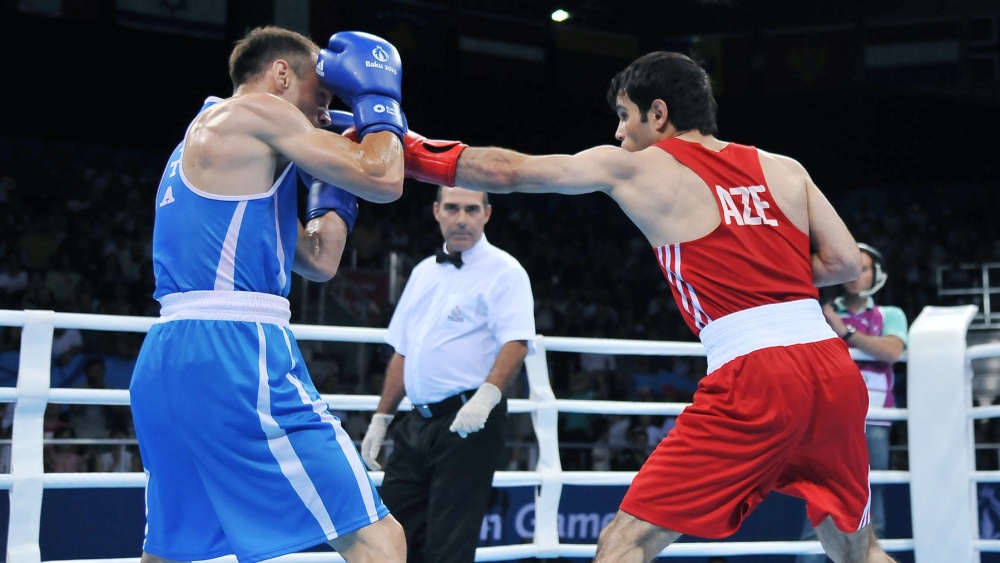
There is no real right or wrong way of doing things, only guidelines. Your best boxing stance will be the one that gives you optimal range, balance, power, defense, flexibility, and mobility. When in your stance, it’s generally beneficial to have a slight bend in your knees to help you absorb punches and lean back and forward. If your legs are straight and you get caught with a good shot, you will most likely be knocked off balance. The important thing to remember is to stay on balance and protected, which is done by keeping your guard up and staying centered.
With your guard, keep your hands covering your chin with your palms facing you, doing so will not only protect your jaw but also your ribs and liver. There are boxers out there who have a low guard, but as a beginner, it’s unwise to take such risks. Generally, boxers have their feet shoulder-width apart, with the toe on their lead foot roughly in line with the heel of their rear foot. Maintaining this position will provide optimal protection as well as helping you keep your balance and remain quick on your feet.
Footwork
Footwork might just be the most underrated aspect of your boxing game. It helps you to control range and evade danger as well as close the distance for an attack. The expression “stay on your toes” is very relevant in the sport of boxing. When you are on your toes you have a greater spring in your step, allowing you to accelerate quickly, move swiftly and cover larger areas.
Staying on your toes will save you from many punches and help you stay on balance. However, when it comes time to drop a power punch you will need to keep both feet firmly planted to generate maximum power. When you move, your form is very important. If you want to move forward, small steps are all it takes, and you should be pushing off your back foot.
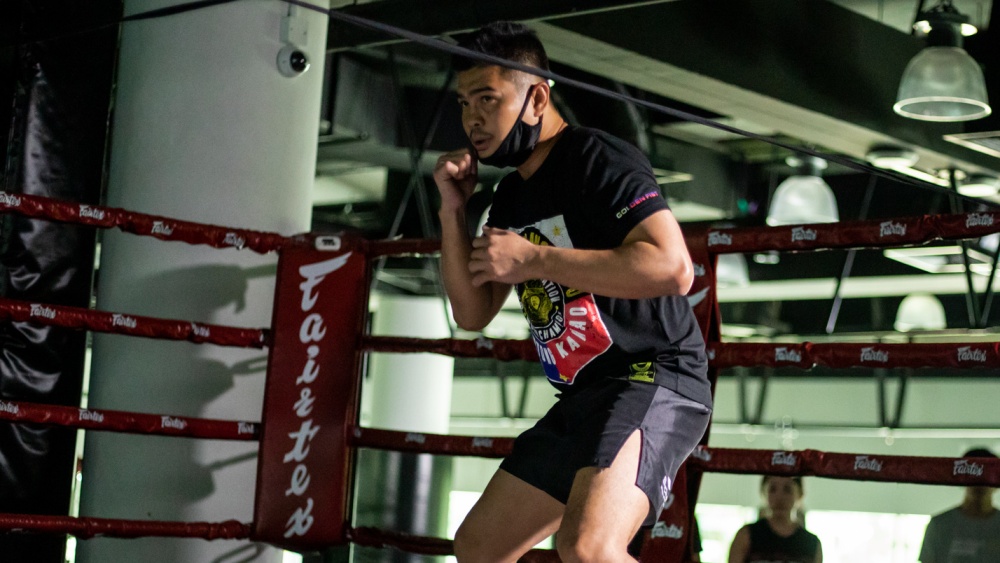
Similarly, if you are going to your right, you would push off your left foot and vice versa. This method of moving will help to keep your feet from being too close together and thus help you keep your balance. Speaking of balance, under no circumstances should your feet cross over. You should also avoid standing square in front of your opponent, as doing so makes you an easy target and will likely have you falling.
Some boxers prefer to have a slightly wider stance, allowing them to load up on their back legs more and also lean back out of the way of punches. However, such tactics require lots of practice and will likely cause more harm than good. Having more bend in your knees will slow down your movement, and getting tagged while leaning back may cause you to wobble.
Drills
There are several ways you can improve your footwork, but skipping is by far the most beneficial for beginners. It helps with your rhythm and stamina, whilst also improving your coordination and your ability to stay light on your toes. Shadowbox daily at every opportunity, ensuring your guard is tight and your form is correct. Start slow and focus on making the correct movements. When possible, stand in front of a mirror to check for holes in your technique.
Practicing your movements on a square-tiled floor can help you maintain the correct stance. You can practice standing in your boxer’s stance and using the lines between the tiles as a point of reference, then try pivoting on your front foot 90 degrees to land at a new angle but still maintaining your boxer’s stance.
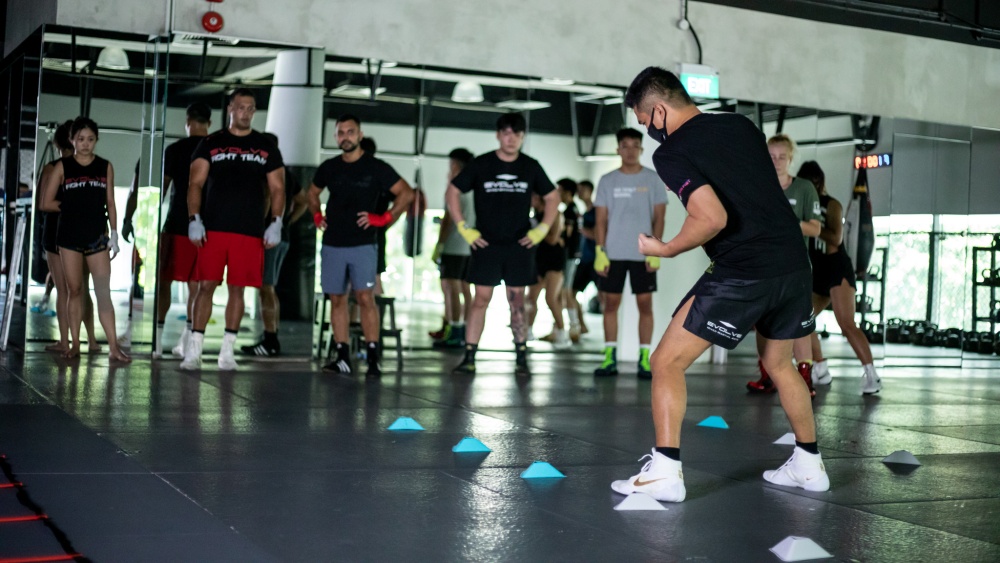
Finding your rhythm with a pendulum step is another good way to keep your body in sync. Do this to warm up, standing straight and shifting your weight from your front foot to your back, throwing out jabs as your lead foot lands, and crosses as your rear foot lands – this will get you used to your feet and hands moving in unison.
A key rule in boxing is to protect yourself at all times. Some say the best form of defense is a good offense. This attitude can certainly bring in frequent wins, but against a cerebral fighter, it will likely not be enough.
As a beginner, your guard is your first line of defense. As such, it should be the first thing you develop. There are many different types of guard that you can use throughout your journey in boxing. There is no right or wrong style as it’s more about preference, though we strongly advise starting out with something basic.
The key point is to remember that – while keeping your hands low may look cool and bring with it a few advantages – the risk of getting caught with big shots is simply too high to chance it.
Standard Guard
The standard guard is what most people gravitate to when they first put the gloves on. You’ve seen it in a million films and photographs, rear hand up high protecting the chin, with their lead hand around a foot or so in front of the face. This is a traditional stance that provides adequate protection. Having the lead hand being a foot or so in front makes it that little bit closer to the target, perfect for fighters with a long reach. Be warned that your jab hand being out makes your face an easier target.
Pros – Good for jabbing
Cons – Face half-exposed
High Guard
Mainly used when under pressure, a high guard is when you lift your hands to cover your head. To do this, push your gloves together so that they form a heart shape, and keep them tightly pressed against each other and your forehead, as well as at the elbows. Professionals mostly use this when they are hurt or on the ropes.
Pros – Protects face
Cons – Restricts vision, susceptible to body shots
A peek-a-boo style guard is generally favored by shorter fighters and is tailored towards an aggressive pressure fighting style. Your arms should be up with your palms in each hand facing you. This position makes your arms cover your ribs and liver from body shots and gives you a full range of view looking over your gloves. It will also enable you to lean side to side more easily due to the fact that you are more squared off.
Pros – Superior head movement
Cons – Less range
Philly Shell (Shoulder Roll)
For the Philly Shell, you need to keep your lead hand low at about waist level and your read hand to your face to catch punches. Your lead shoulder should be raised to protect your chin and deflect punches. This guard protects your body well but also makes your jabs harder to see coming.
While an excellent guard to use, this one is better avoided by beginners as it takes practice and experience to use it properly.
Pros – Well protected body
Cons – Exposed face
Always Remember
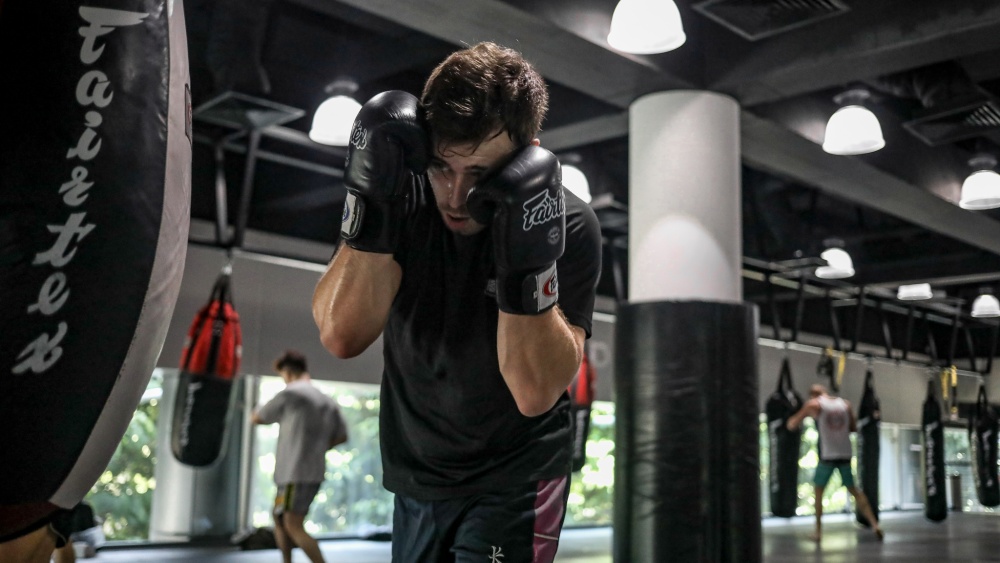
Whatever guard you choose, there are some basic principles to drill. Keep your chin tucked in and stay looking up at your opponent as if you’re frowning. The less space between your chin and your neck, the less likely you are to get your head knocked back. Remember to return to your guard after every punching and keep your eyes on your opponent at all times, even when performing evasive maneuvers. You may also perform these drills to improve your boxing defense.
Blocks, Parrying, And Counters
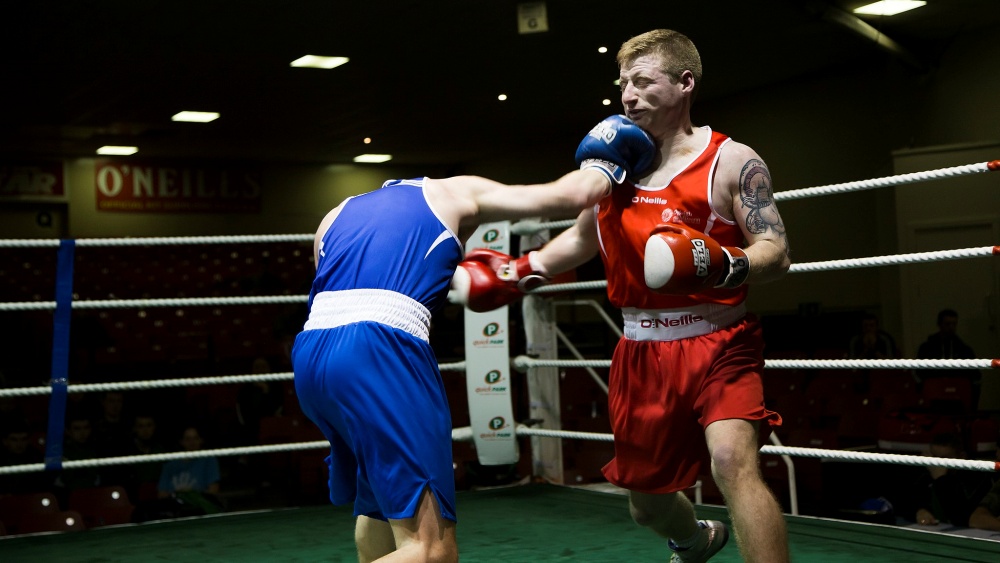
Shelling up with the high guard is a sensible move if you get hit with a big shot, but be warned that in amateur boxing, it only takes a few unanswered punches for the referee to issue a standing 8 count. Instead of shelling up, look for opportunities to counter your opponent’s strikes using blocks, hooks, body shots, and feints.
A feint is where you pretend to throw a punch or make a movement in order to hide your true intentions. Feinting can help you get some breathing space when under pressure and disrupt your opponents’ rhythm. More importantly, you can gauge how they react to different punches and pick them apart over time.
Parrying is where you slap an incoming punch off-course, creating opportunities to return fire over their jab. Parrying takes more skill and requires sharper reflexes than blocking but saves you from having to absorb their punches on your gloves. You can also use the cups in your gloves to scoop your opponents’ guard down but pick your moments carefully to avoid running into a big shot.
A slip is when you lean out of the way of an incoming punch. This is a great way to get close to someone who has a better reach than you. From this position, you can use your leverage from your hips to throw body shots and uppercuts. Rolls are when you dip under a hook and can be used as an opportunity to load up on a shot of your own as you swing around to a neutral position.
Don’t Forget Your Footwork
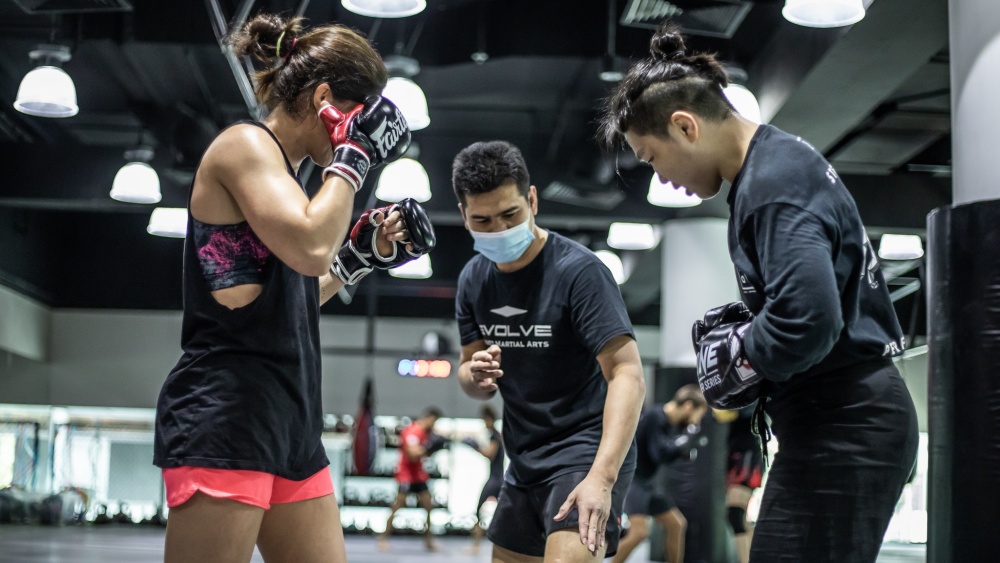
Finally, the importance of good footwork should not be overlooked. Well-honed footwork will help you defend without even needing to use your guard, providing you are able to control the range with your movement and jab. The important thing to remember is to stay centered on your toes and with a slight dip in your knees. When you are being pressed, move to the side rather than backward to avoid ending up on the ropes.
We have a topic dedicated to footwork that you can refer to you in order to help you add another weapon to your defensive arsenal. Be sure to check it out on the previous chapter if you haven’t.
It is reckless to go into a fight without a basic understanding of how you can utilize footwork techniques and different strategies to pressure your opponent into a corner. Without this knowledge, you will often find yourself either chasing your opponent around the ring or, worse still, being pushed into the corner yourself. Fear not: this guide will teach you how to trap and control your opponent the right way.
A good ring IQ will, for the most part, help you avoid situations where you’re on the ropes. You need to know when and where to move, but also when to hold your ground and occasionally even fall back as a last resort. A good boxer with fast feet will be able to run rings around you if you don’t know how to cut off the ring and force them into a corner, which can lose you points and even the fight.
Ring generalship is all about controlling the pace of the fight and holding the center of the ring; doing so is viewed favorably by the judges. The key to ring generalship is holding ground, pushing forward and not falling back. If you are pushed in a corner, you can try to grab and spin your opponent so that you switch positions, or you can slip under their arm and escape from their side to readjust.
Lateral Movement
This is one of the most fundamental principles for good footwork. Learning how to move laterally in a fight will not only help you to trap your opponent but will also keep you from ending up on the ropes or in the corner. The ground you give up will be difficult to take back as you will have your opponent’s forward momentum to contend with, so always move sideways away from danger.
Chances are your opponent will try to step around you to get a different angle, but rather than circle each other in the center of the ring, try to step right when they step right and left when they go left. Doing this will keep them from bullying you around the ring and keep them in front of you. For this to be effective you will need to make good use of your jab to keep your opponent from rushing in and pushing you back.
Constant Pressure
The reason why this tactic is so effective is that it can make your opponent feel flustered and lead to errors on their part. The constant pressure from your jab and ring control will likely cause frustration and panic, leading them to either swing wildly or take a step back to get some breathing space. Don’t let them have it – every time they move even one inch backward, take the ground from them and don’t give it back.
If they start swinging wildly, step sideways and look for opportunities to counter. Many beginners make the mistake of charging forward head-on to try to overwhelm their opponent, but this is a poor tactic against an experienced boxer. You will instead find yourself constantly running into their jabs while chasing them in circles.
It’s not a good look – charging forward headfirst is target practice to a good boxer. You will simply wear yourself out playing catch up, and if you get caught with a check hook you may end up face-first into the corner post, as was the case when Ricky Hatton fought Floyd Mayweather. A skilled boxer with a high ring IQ will almost always beat an aggressive power puncher.
Taking Ground
The trick is to try to push your opponent back when the corner is behind them. If they go to the ropes and try to slip out the side, strafe alongside them to keep their backs against the ropes. From here your task is to keep them from escaping. When cornered, many fighters will throw desperate “get-away-from-me punches,” so don’t get careless.
Utilize your jab to keep a safe amount of space between you and your opponent. If you get too close, there is a good chance they will attempt to spin you. If they try to break out, move back a touch but continue to use lateral movement to stop them from passing you. Getting too close and trying to finish the job is an unnecessary risk. Jab their gloves when they are out of range just to keep the pressure on them.
The jabs don’t even need to have much power in them: it’s more about controlling the pace of the fight. Save the big shots for your counters and for when you have them cornered but don’t get reckless. When you want to land a shot, pop in and out quickly with just one or two hits but don’t back up any further than needed.
When you have an opponent against the ropes, it’s sometimes beneficial to cut a 45-degree angle outside of their lead foot to force them into the corner from their side. This tactic gives you a fresh angle to throw punches from, be quick and hit before your opponent can readjust. Chances are they will back up into the corner to create distance from you. This move is known as the double trap.
Finally, if your opponent rushes you like a bull, don’t retreat by leaning back but keep your feet planted – this is a good way of avoiding punches without giving up the ground. Be mindful that you can also put yourself off-balance and if you get caught, which will likely knock you down or send you hurtling backward.
After you’ve found your stance and gotten your basic defensive maneuvers, loosen up. With your hands up and elbows in, make sure that you keep your knees slightly bent and the heel of your rear foot lifted off the floor. Remember to breathe and stay relaxed. You should never give any clues to an opponent that the jab is coming. Refrain from loading up or dropping your shoulder.
Now, throw your lead hand as swiftly as possible towards your target while keeping your movement smooth. Don’t transfer your weight too far forward or lock up before you hit the target. Your fist should be thrown upwards and forwards towards the target like a whip – you want to get the right snapping motion with your hand as quickly as possible.
It’s All In The Rotation
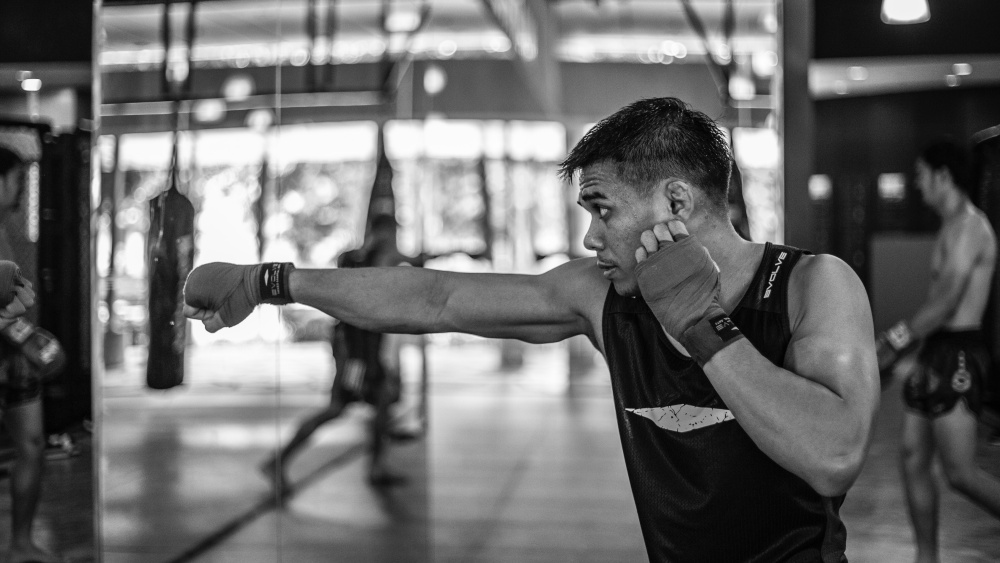
The secret behind a great jab is in the rotation of the arm.
As you throw the punch, the key is to rotate your fist and forearm in order to land the jab with your palm facing downward and your shoulder covering your chin. This rotating movement will ensure that the impact of your fist is in line with the shoulder turning over to ensure that any counters are not going to make impact with an exposed chin.
As you turn over your fist and forearm, your elbow will always rotate. The best way to make this movement as smooth as possible is to slightly lift the shoulder of your lead arm. Remember that it is very important to consider how vulnerable you are when throwing the jab. If you leave the chin exposed, a right cross counter, for example, could see you in hot water.
A common mistake beginners tend to make when throwing the jab is bending their elbow. This should be avoided at all costs, as it can throw off the most effective angle – a straight angle – and take the snap away from the final product. You will also give clues to your opponent that a jab is coming, which, in turn, will give them time to prepare for the incoming shot.
The jab should always be thrown with a straight elbow. Imagine the mechanics of a drill when throwing it – rotation, forward movement, and the snap generated by the rotation of the fist make it a “punchier” shot. Keep your palm down and tighten up at the moment of impact. Locking up prior to hitting your target will reduce the speed and effectiveness of the jab while expending more energy.
Learning From The Masters
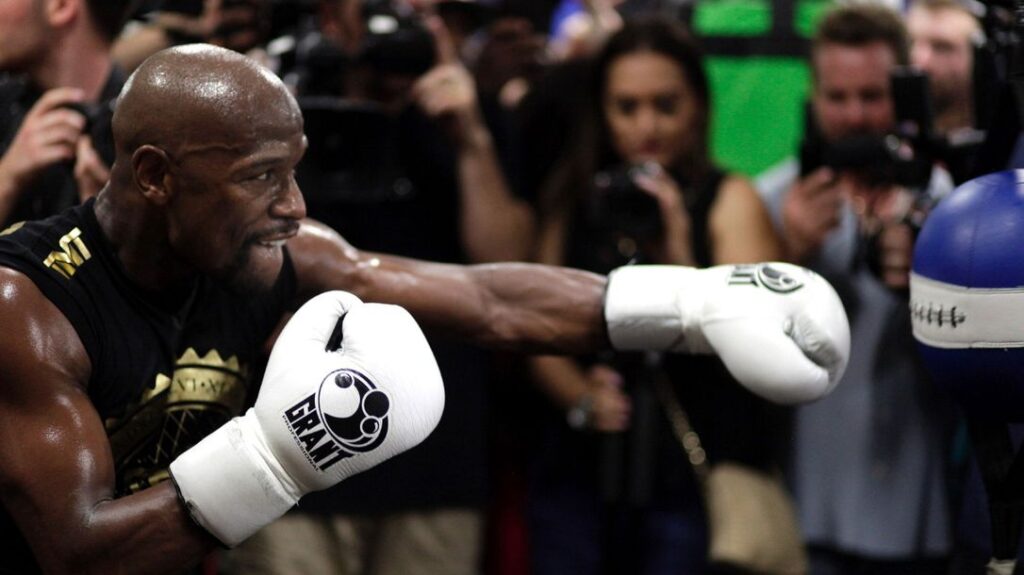
As you continue to progress in your boxing journey, you will learn of a number of variations on the jab. While it is certainly advised to focus on getting the basics right first, these can definitely be looked at when you are comfortable in executing the fundamentals.
However, in order to perfect the strokes of your own paintbrush, there is no better way than to study the master artists. Fighters such as Sugar Ray Leonard, Muhammad Ali, Thomas Hearns, Larry Holmes, Andre Ward, Wladimir Klitschko, Marvin Hagler, and, of course, Sugar Ray Robinson were masters of the fine art of the jab.
Any budding boxer should always spend as much time as possible studying how the finest exponents of a particular art pulled it off.
The things to watch out for when studying an accomplished boxer’s jab are:
- Technique
- Body positioning
- Range of execution
- Power
- Reset
Perfecting your jab will come down to using the specific attributes you have at your disposal. Depending on your speed and agility – which will likely, but not always be dictated by your weight – your jab may be used in many different ways. For the most part, however, it will be your bread and butter inside the ropes.
When you are not training, spend as much time as you can to learn from the greats. Try to incorporate the nuances into your game that made theirs so successful.
Always Remember
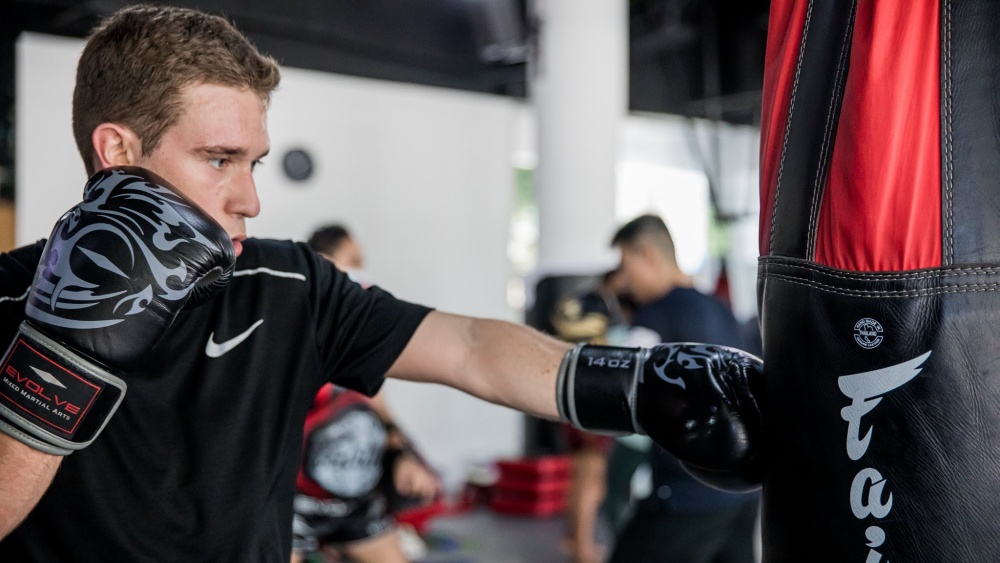
Practice is everything in boxing. Your technique is honed through consistency and the right application. As such, you need to spend as much time perfecting the fundamentals as possible and this more than certainly applies to the jab.
There is no punch in boxing that can come close to the jab for everything that it offers to a fighter. In both offense and defense, a cultured jab can be the difference. Behind the glorious fight-ending shots and the improbable great escapes, a cerebral boxer can put their trust in their faithful jab to help them achieve greatness.
If there is one punch any beginner needs to work hard to master, there is no doubt what it should be.
When it comes to devastating punching power, nothing packs punch quite like a well-placed, perfectly timed cross. Often referred to as the straight, the cross is the second most used punch in boxing and carries with it supreme stopping power. Sure, hooks are also capable of doing damage, but they are also much more difficult to throw and can often be seen coming from a mile away.
The cross is used as a mid to long-range power punch, usually followed on from the jab or when the opponent is dazed. Unlike the hook, the cross is a very simple punch to throw and leaves you in a good position to chain together a combo. That said if you throw it correctly and time it well enough, it may well end the fight right there and then.
In order to get the most out of your cross, there are a number of important things to remember.
First and foremost, your arm should be fully extended by the time it reaches its destination and should twist from a vertical to horizontal angle as it lands. The twisting of your fist as the punch hits the target produces more power, making it that much more potent. As you throw it, it is important to shift your weight from your back foot to your front, whilst simultaneously pivoting your rear foot, bending your knees and twisting your body with it.
This technique generates maximum torque and drives power from your legs and hips. Keeping a slight bend in your knees will not only help you stay balanced but it will also increase your punching power, but don’t stay too low as this will affect your ability to move out of the danger zone. The key thing is to stay facing your opponent, as you risk being caught off-balance if countered.
Vulnerability And Overextending
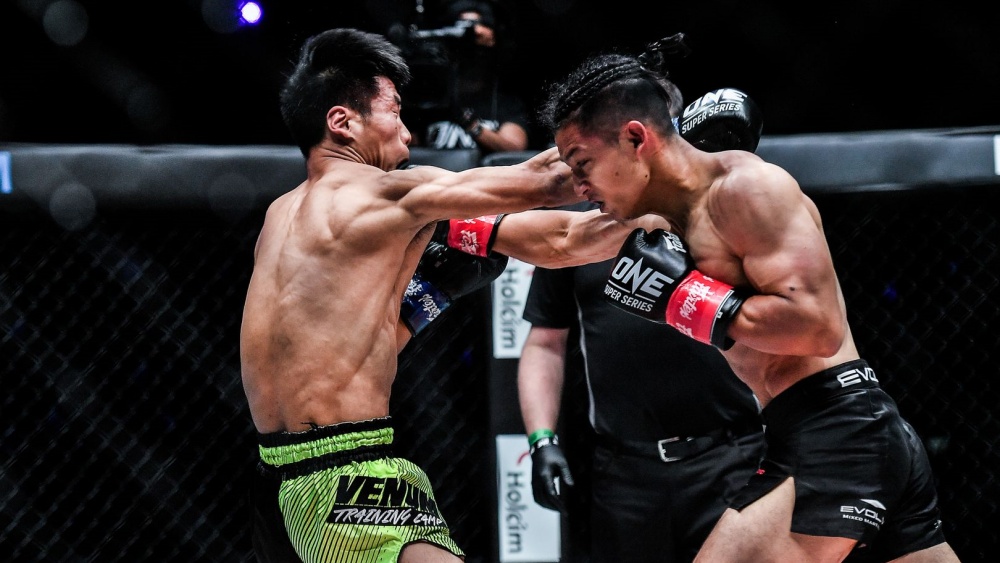
Now you know what to do, there is a list of equally important things for you to not do when throwing a cross or any punch for that matter. It is vital that you keep your guard up and return your hands to your chin after throwing, as a cross leaves you vulnerable to left hook counters. Many beginners tend to make the mistake of dropping their hands after they throw. This is particularly common in a fight situation when fatigue settles in. You have to drill this constantly until it becomes second nature. Don’t wait to learn this lesson the hard way.
The second most common mistake beginners tend to make is overextending the punch. Overextending doesn’t mean using your full arm’s reach: it means leaning into the shot when your arm is already fully extended.
This is a big no-no for a few reasons. When you overextend any punch you lose your center of gravity, which may cause you to fall forward whilst also making it difficult to return to a neutral position, increasing the odds of you being countered. Overextending is usually a result of throwing a punch when your opponent is out of striking range.
You can avoid this scenario altogether by using your jab as a probe and waiting for the right opening to presents itself, which will likely be when your opponent steps in. Avoid putting your weight on your front foot like the plague. If your weight’s on your front foot when you throw the cross, you will lose most of its potential sting, as its power is derived from the weight distribution from your back foot to your front.
Timing
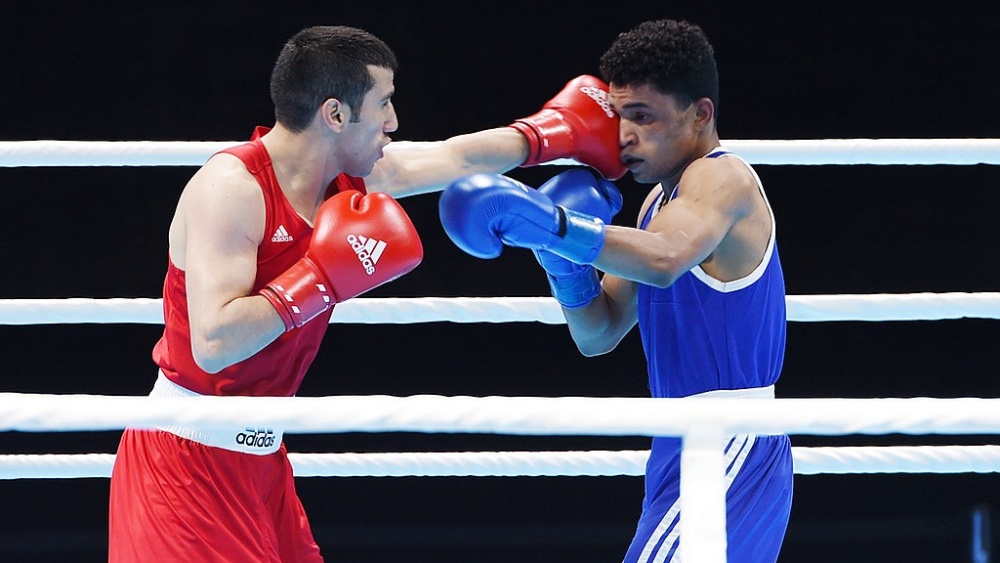
As with overextending, having all your weight at the front will also make it easier to knock you off-balance. If you happen to fall forward into your opponent’s big punch the only place you will be going is the canvas. As you throw, ensure your rear foot remains grounded. It’s okay to twist your toes, just as long as the foot remains on the floor. If you want to see some world-class examples of the perfect cross, look no further than Floyd Mayweather, who has perfected it to an art form.
You will notice that Floyd often uses his lead shoulder to roll his opponent’s jab off-course (known as a shoulder roll) which puts them off balance. He then follows up with a cross as he twists back to his neutral position, providing the shot with added torque, as mentioned previously. When Floyd uses this move, you will notice that it is almost always followed immediately by an evasive maneuver to escape his opponent’s return fire.
Such a tactic requires skill, timing, and practice, so as a beginner it’s not really something you should risk in an actual fight, but it’s definitely something to work on during training. Unless you’re Mayweather, landing the perfect cross is no easy feat, to land effectively will usually require a setup beforehand, as throwing from a standard position is a risky move. Try not to load up on your shots or give any indication of your intentions, this is what’s known as telegraphing your punch.
Considerations
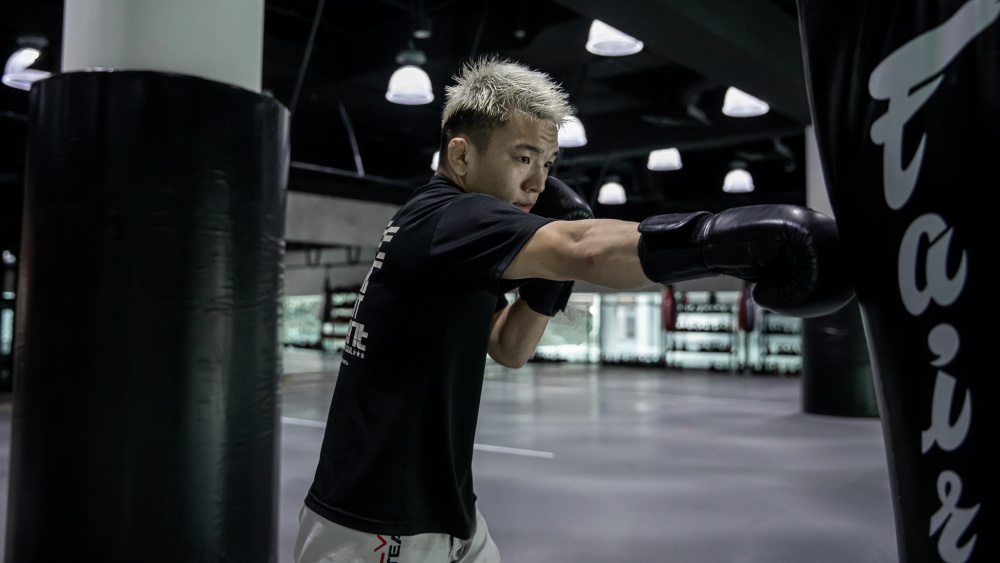
As the cross has a long way to travel this is easier said than done, just remember that your jab is much closer to your opponent than your cross, so use your jab to distract your opponent and obscure their vision so that you can follow it up with the cross. Keep your elbows tucked, flaring them out as you punch gives your opponent a chance to move.
Don’t just focus on the head. Sometimes it pays to go for a body jab to lower your opponents’ guard, then follow up with a cross. If you can, try not to always have your head on the centerline when you do a cross, doing so will make you predictable and an easy target for a counter, so throw in slips here and there and even go to the body with it.
A cross to the body works especially well when dealing with somebody of the opposite stance, as you will be slipping to their outside and hitting them right in the solar plexus. Remember, you aren’t driving the punch, you are whipping it. Therefore, it needs to have a sharp sting to it and return immediately to your chin.
Always ensure to drill this punch constantly on its own and with combinations until it becomes second nature.
Speed, precision, beauty. In boxing, the hook has it all and then some. Beloved by pugilists as one of the most effective shots in a fighter’s arsenal, the elegance of this punch disguises just how dangerous it can be when it lands. As such, every beginner will invariably be introduced to one of boxing’s four standard punches at the early points of their journey in the sport.
The key to a great hook is, unsurprisingly, in the technique in how it is thrown. As such, you stand about as likely to master this punch as a beginner as Jimi Hendrix perfected the art of the guitar the first time he held one in his hands. Practice makes perfect, sure, but bad habits can also eat away at progress. Either way, applying the right technique is integral to honing your hook.
The Right Technique When Throwing A Hook
There are a few different ways to throw the hook and several variations.
As a beginner, you should start by focusing on a standard lead hook. The object of this punch is to get around your opponent’s defense through the angle of an ark. This name of the punch pertains to the trajectory of the punch – the motion of the shot travels like a hook, much like that of the end of a fishing rod. As such, you need to familiarize yourself with the angle you need to traverse the punch through.
By rotating your core, you can generate serious power in your hooks. It is important to remember that the arm should not be moving when throwing a hook. Rather, it is the rotation of the core that lies behind the mechanics of this shot. Getting the technique down is the most important thing as a beginner. As such, focus on following the right steps.
First off, get into your proper boxing stance, ensuring that your feet are set diagonally apart. Hold your fist in front of you before bending it at a 90-degree angle. Your palm should be facing you. Then, your shoulders should be kept high with your chin low. Your non-throwing hand should be up to protect your chin from any counters.
“Squashing The Bug”
You must ensure that you are using the transference of weight to get the most power from your hook. When throwing the shot, your lead foot should turn inwards towards the other foot as you carry through with the motion. This is the most important thing to remember about throwing the hook.
When it comes to rotating the body and the leg, remember that the power moves up from your feet to your legs, then from your hips to your core. This power is then transferred into your fist before the point of impact. Some fighters pretend that they are crushing a grape, squashing a bug, or putting out a cigarette on the floor when turning their foot in order to help them visualize the movement.
Now that you know what to do when throwing this shot, let’s take a look at what not to do.
Common Mistakes To Avoid
Aside from misplacing their weight and failing to follow through with the right twisting motion, fighters make other common mistakes when throwing this shot. Below, you will find an explanation for the errors that are most commonly encountered when throwing a hook.
Throwing From Out Of Range
Range is everything in boxing. A seasoned opponent will take advantage of any fighter that does not have the nous to understand how important it is to be able to hit the target from the right distance, too. If you are not within the right range of your opponent – and start loading up a hook – this will feel like Christmas to a smart fighter.
By nature, the hook is a short punch that should be fast and powerful. It should not be attempted when your opponent is too far away as this leaves you open to a counter. This is why it is important to work hard on perfecting the basics, starting with the fundamental mechanics of this punch.
Overextending
Yes, this is somewhat related to range. As you should always start with the basic hook when beginning your boxing journey – avoiding anything flashy like a leaping hook or gazelle style punch – you should never be overextending. Doing so will leave you open to counter shots and potentially have you out of the contest sooner than you would like.
If you are struggling to find the range for your hooks, you can work on stepping into them. If you cannot perfect this skill in the gym with your coach or training partners, it is probably a good idea to abandon throwing any hooks at all until you have the technique down.
Loading Up
It’s not all about putting as much power as you can into your hooks. If you load up then you will be indicating to your opponent that this punch is coming. There is nothing worse than practically spelling things out for a fighter, as this will allow them to take advantage of this physical clue and time you. If they can time you loading up, they can land a stiff counter shot of their own, or better yet, beat you to the punch. Keep things tight and work hard on the technique before trying to inject as much power into the shot as you can.
Failing To Protect Yourself
Perhaps the most common error for a beginner is not protecting themselves from counters when they throw a hook. Always keep your non-throwing hand close to your chin when throwing the hook as failing to do so will leave you in a very shaky position. Additionally, your hooking hand should always return to protect you from any shots through this channel.
Always Remember
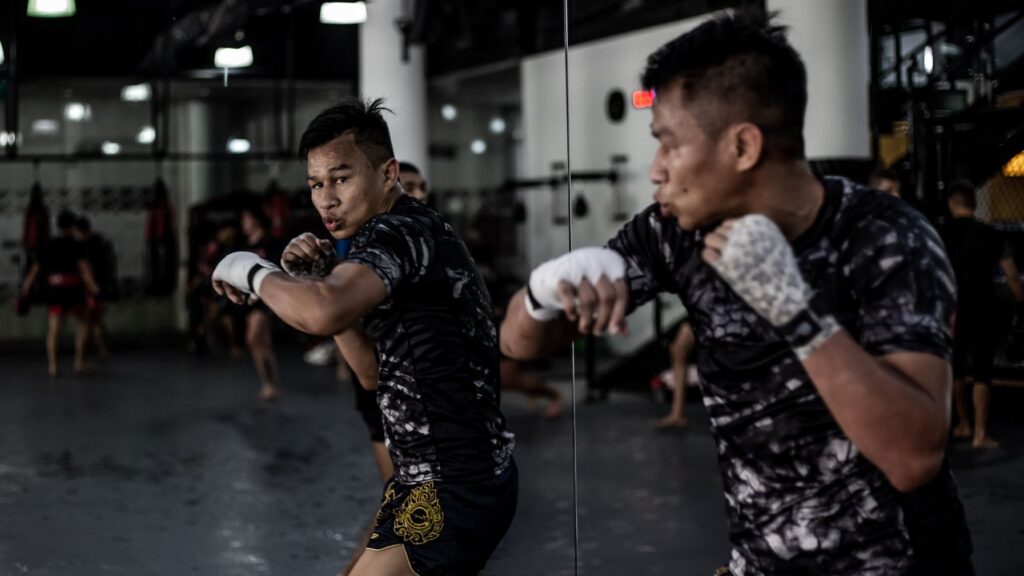
The basics exist for a reason. Everyone must start from scratch before they can become experts in any discipline. When it comes to the hook, avoid bad patterns from the outset and everything else will fall into place.
There is perhaps a reason why boxing’s least used yet arguably most devastating punch is extremely difficult to pull off effectively. When done properly, a well-placed uppercut has the ability to get the job done in spectacular fashion. In the unlikely event of your opponent not already being sprawled out on the canvas, you will have a moment to follow up with further punches before they return their head to the neutral position.
Boxing is a combat sport and the aim of the game is to do more damage to your opponent than they do to you. This is why the uppercut is such an effective punch. You may be wondering why the uppercut is regarded as the most difficult punch to throw and need answers on how to use it effectively. In this piece, we will run through everything you need to know about the uppercut as a beginner.
Without practicing your technique and ironing out the flaws, chances are you will find it near impossible to land a clean uppercut under most circumstances. With it being such a difficult punch to master, most fighters throw it with very poor technique. By following this guide, you can ensure you don’t become one of them.
Technique
There are a number of reasons why the uppercut is difficult, but the most common beginners’ mistake is throwing it from too far away. The uppercut is a short sharp punch that requires your arm to be loose and relaxed. You only tense the arm upon the point of impact, with your elbows facing down and your fist facing upwards.
The full movement should resemble a small circle, with your legs and hips making the same movements as when you throw a hook – just remember to keep your eyes on your opponent at all times. A successful uppercut requires you to be within very close range of your opponent to land flush (and with their guard in between you and them). You will struggle to land one accurately without the correct technique and you will also likely take a knock in the process.

The thing to remember is that it doesn’t have to look pretty, it just has to land flush. The uppercut is too dangerous a punch to throw recklessly, so, if you miss or hit their guard you will be ripe for a nasty counter hook. Choose your moment wisely and strike with precision.
Many beginners have a tendency to crouch low and spring upwards with their legs, but this is actually detrimental and will take the power out of the punch, as well as potentially throwing you out of position. Instead, try to throw from the waist in a pivoting motion, the same way as you do when you hook. Your entire body should pivot in exactly the same way, including your arm, which should roughly be at a 90-degree angle.
The only real difference being a hook and an uppercut is an uppercut drops low and goes up, as opposed to going out and across. When about to throw, don’t lean forward or backward, as this will take away space for the punch and leave you open for a return uppercut, and leaning back will affect both your range and leverage. The general rule of thumb is to have most of your weight on the side that you are throwing the uppercut from, either before or during the punch being thrown.
Don’t Shift Your Weight
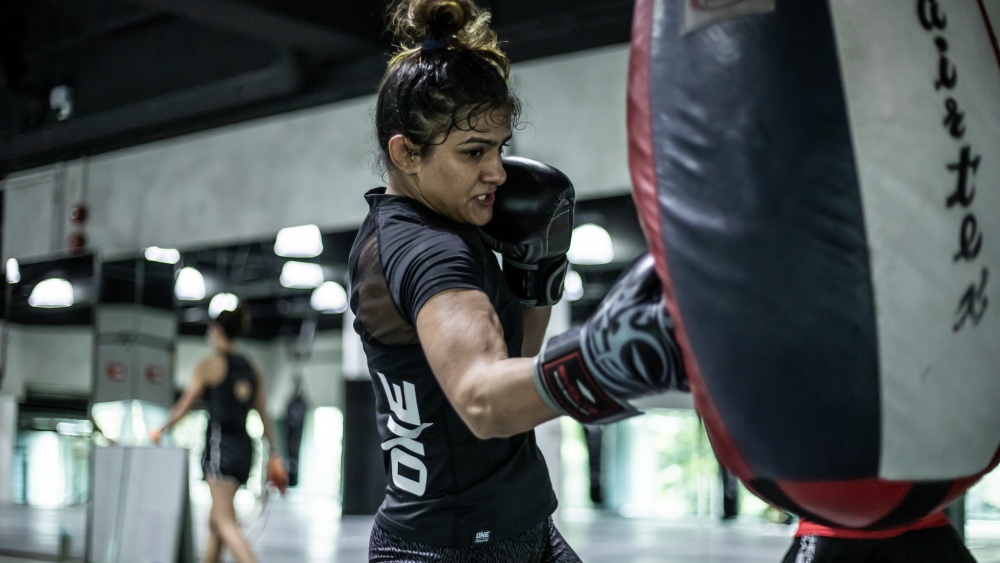
Try not to shift your weight, as doing so will take away some of your punching power. Instead of dropping your hands and firing up, focus on small tight circular movements. When you drop your hands and fire up you are only using your arm, but when you do the circular motion you will have momentum and drive behind the punch.
At no point should your hands drop lower than your elbow. Dropping your hands is risky and stops you from getting your weight behind the thrust, not to mention it’s a good way to damage your wrist. Control the movement. Stay on target and keep your elbows tucked in to protect your ribs from body shots.
Bear in mind that you also need the elbows behind your punches for power. Imagine you are trying to knock their head up with your elbow, via your fist. When the elbow is underneath it gets more leverage behind it, making it more powerful. Maintain a slight bend in knees and keep your hips low, the only movement in the hips should be a twist for added torque.
Staying low will keep you grounded, adding power to the punch and keeping you from falling off balance. One important caveat to consider though is that too much bend in knees is time-consuming and less controlled – you won’t always have the chance to bend down first. Remember not to flare your elbows, keep knuckles pointing upwards and return to guard immediately.
Setups And Scenarios
What many people fail to consider is that you can’t really just throw an uppercut from a standard position. The best time to strike is when your opponent is crouching or doing a barrel roll. Such a maneuver is the perfect opportunity to knock them back upright. Watch Anthony Joshua vs. Wladamir Klitschko for a perfect example of such an uppercut in action, and witness its devastating power.
Another prime time for the uppercut is when your opponent is throwing at you – particularly a hook – so if you are quick you can duck underneath it and come up with an uppercut. You can watch almost any Mike Tyson fight to see this in action. Slipping to an opponent’s outside when they jab and throwing an uppercut down the middle is also an effective tactic, particularly if your opponent is in the opposite stance as you.
As always, none of this matters if you don’t put in the practice and work on your drills. Experiment with different combinations and set-ups, and try using a hanging aqua bag to get you used to the upward motion. Additionally, you can practice a few times a week with a friend using focus mitts, and have them hold them at different heights and angles.
Combinations are important for a wide variety of reasons. Everybody has their own estimation on how much of a role the mind plays in a boxing match, with many saying the sport is 50% mental and 50% physical, but there are also fighters and trainers who swear it is closer to 80-90% a mental game, including Floyd Mayweather and Cus D’Amato, who both firmly believed in the power of the mind to become a great boxer.
Without knowing combinations, you may become overwhelmed when you come up against an opponent who is stringing punches together and beating you all over the place. Inside the ring is not the place to learn the importance of combinations. Save yourself the literal headache and follow this guide to learn some simple combinations to get your punches flowing.
Combinations
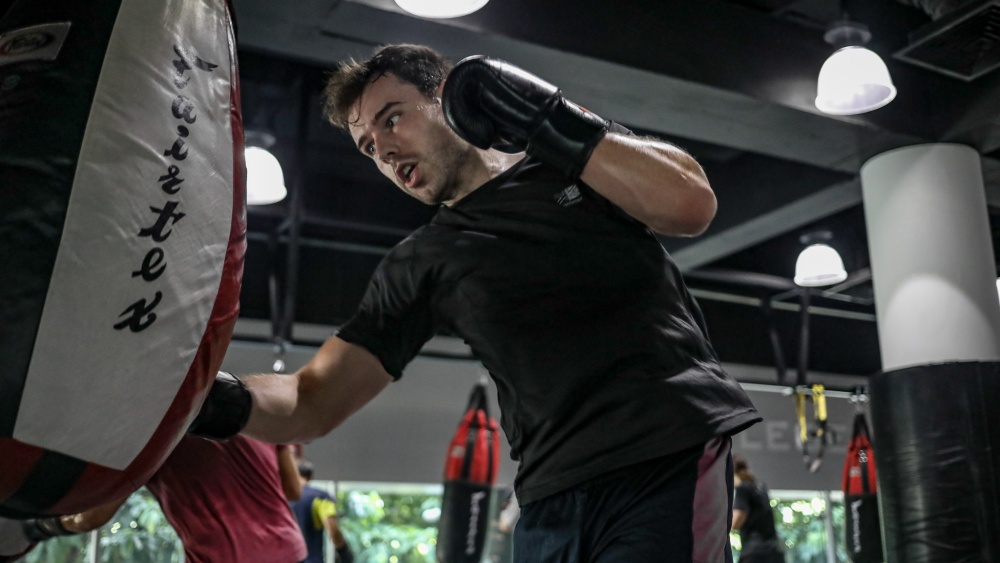
After learning the four main punches in boxing, let’s take a look at some combinations. For the sake of simplicity, the combos will contain no more than four punches and are designed for an orthodox vs. orthodox situation. They can, of course, be rotated for southpaw vs. southpaw. Generally, if you are southpaw vs. orthodox or vice versa, there are different combinations that may be more effective and help you to avoid accidentally walking into their power punches.
Let’s break down a few basic but effective combinations.
Jab – Jab – Cross.
This one is very simple and straightforward yet extremely effective: the double jab cross is a perfect combination for beginners to work on. Get used to throwing double or even triple jabs whenever possible, as they can fluster your opponent and affect their line of sight, rendering your cross that much more dangerous. When you jab, keep your right hand covering your mouth and nose to protect you from return fire.
Jab – Cross – Left Body Hook
Don’t worry so much about the jab landing flush, it’s more of a distraction for the follow-up. Hopefully by the time you get to throw the hook your opponents’ guard will be covering his face, giving you an opportunity to bring the hook underneath their guard onto their soft squishy liver.
Jab – Cross – Left Hook – Right Uppercut
This combo is difficult to pull off but if done properly, it can be utterly devastating. The jab and the cross should hopefully get your opponent to raise his guard, giving you the chance to come around their blind spot created by their gloves with the left hook, finishing off with an uppercut straight through the middle. This one is a little more advanced, so make sure your uppercut game is on point before trying this in an actual fight.
Slip – Left Body Hook – Right Body Hook – Left Uppercut
This is a defensive combination. You will need your opponent to jab so you can get on the inside. From there they will be vulnerable at the stomach and the ribs, so a left hook to the belly followed by a right to the ribs should lower their left arm, enabling you to finish with a big left uppercut. Don’t rely on your reflexes. Instead, lean forward a touch to bait your opponent into throwing. Jabbing their gloves when out of the danger zone is a good way to fluster them and make them take risks.
Tactical Retreat
Something that beginners often overlook is an exit strategy. This means when you are finished you need to work on how you get out of the danger zone, as your opponent’s natural reaction is to return fire before you escape. A smart way to deal with this is to finish with a roll and/or a side step to escape from harm’s way.
Knowing how to put these punches together will also make you better at defence because you will have a better idea of what to expect. Have a game plan by all means, but it doesn’t need to be set in stone. If you practice the combinations enough it will become second nature and in no time at all, you will be putting punches together fluidly without even thinking about it.
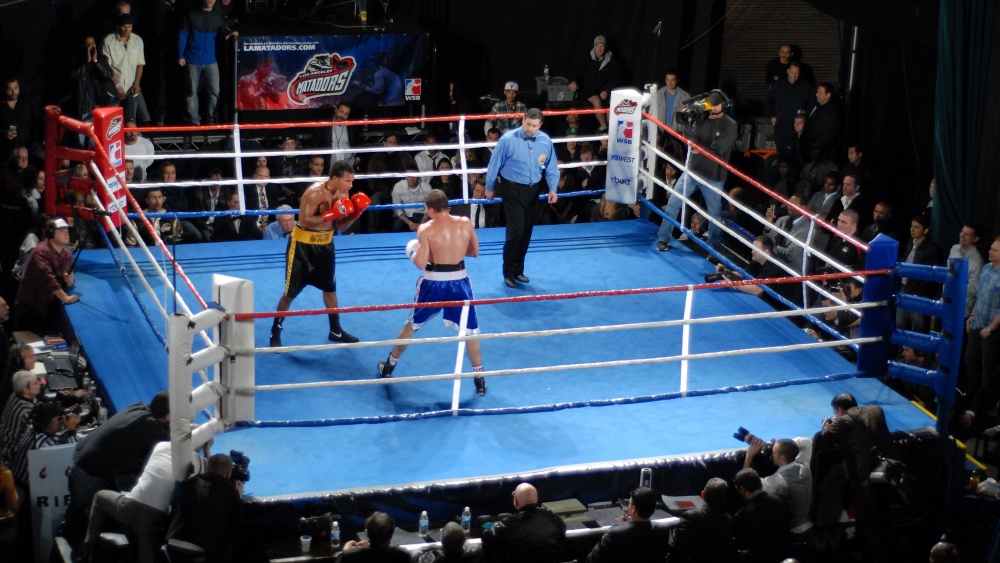
When it comes to the sport of boxing, the scoring system can be confusing, to say the least. There are a wide variety of variables that the judges take – or at least are supposed to take into consideration – but sometimes don’t. As such, the whole process can become difficult to fully wrap your head around.
Much of this is due to the fact that boxing judges operate on what is referred to as a 10-Point Must System. If you watch boxing at all, you will have no doubt noticed that the majority of rounds end with a 10-9 score, with 10 going to the fighter that is perceived to have been more dominant. The loser of a round will typically earn 9 points unless they have been knocked down or deducted a point. However, there is more than meets the eye when it comes to scoring in boxing.
The Basics
In the unlikely event when a judge feels that both fighters put on a flawless performance, it is possible for the judge to award both fighters ten points each, making the round a draw. Getting knocked down will immediately cost a point and then a point for each subsequent knockdown. If both fighters get knocked down in the same round, the knockdowns cancel each other out. It is possible to have a 10-8 round if one fighter gets totally obliterated but stays standing, although some judges will still rule it a 10-9.
The referee has the ability to deduct points off a fighter if he suspects there has been some level of foul play, either accidental or intentional. This could be for low blows or pushing, though usually, the ref will give warnings beforehand. However, he/she is not obligated to do so, regardless of whether the foul in question was accidental or not. In short, this means that everything short of an actual knockout will affect the way the judges score each round.
Sure, you may have your own ideas on what should be rewarded and what shouldn’t, but judges have their own set of criteria by which to judge fights by. Being aware of this while in the ring can make the difference between a win and a loss, so all current and would-be fighters pay close attention.
Judges’ Criteria
Ring generalship is the first thing you need to be aware of. In boxing, fighters are viewed more favorably when they control the pace of the fight and take the action to their opponent. Often, the person who is in the center of the ring the most gains points for ring generalship, but it can also be awarded by showing effective aggression, meaning as long as they are dishing out more punches than they’re taking, they should be up on the scorecards.
Landing bigger, cleaner shots will also award further points, though this can also be countered by an opponent who has a great defense. If they are successfully slipping punches and countering attacks with great speed and accuracy, they will likely be viewed more favorably than an aggressive fighter who isn’t landing as effectively.
Judges’ Decisions
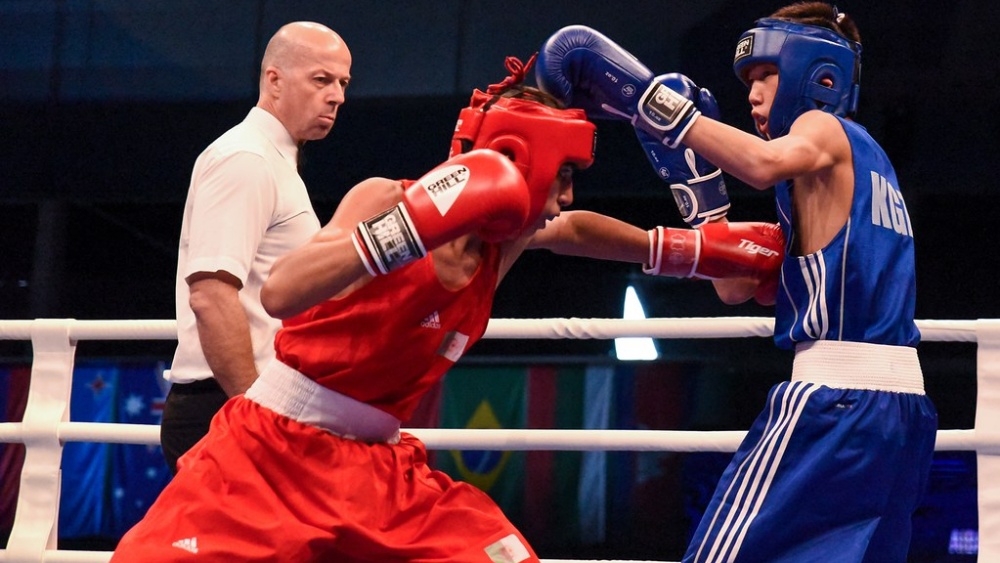
Where the fight goes the distance, the result will be down to the judges’ scorecards. In this instance, there are four possible outcomes depending on how they feel the fight went.
- If all three judges have the same boxer scoring the most points, he or she will be awarded an unanimous decision, making that boxer unquestionably the winner in the eyes of all of the judges.
- A split decision occurs when two of the judges score a win for one fighter and the remaining judge awards the win to the other.
- A majority decision is when two judges score a win and the third calls it a draw.
- The fourth and final scenario (bar a knockout) is a draw. There are two ways a draw can occur: the first is when each fighter gets a win and one judge scores it a draw. The second scenario is if two of the judges declare it a draw, which renders the remaining judges’ score void.
In a nutshell, the three key things judges are looking for are: the number of clean punches landed, skillful and tactical domination, and the overall competitiveness of the fight.
How To Influence The Judges
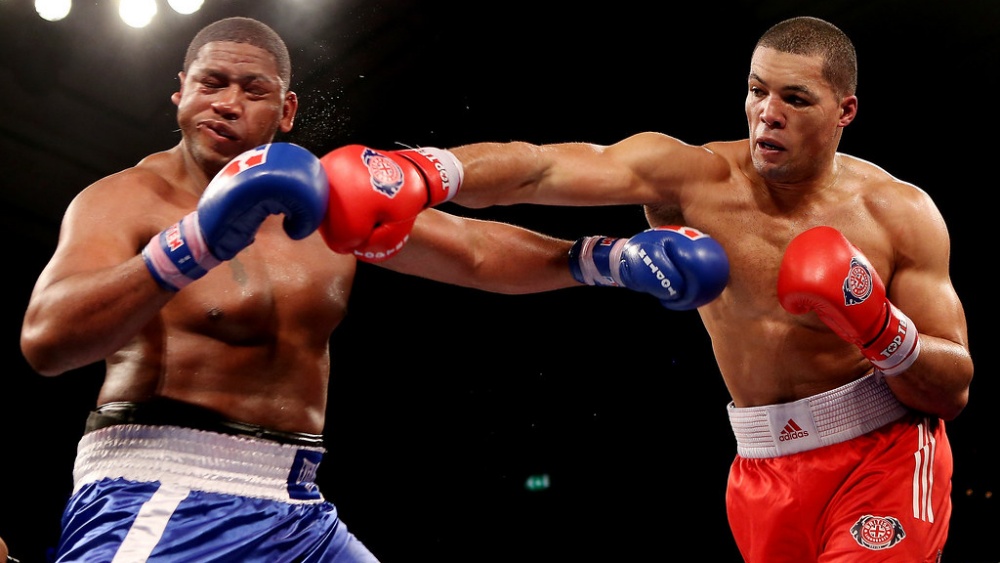
Land Clean Shots
This sounds obvious but if it appears to hit the gloves, arms, or shoulders, it probably won’t count. This will likely be the case even if the punch connects but grazes them. The only way to score for sure is to land cleanly, so pick your shots carefully.
Punch With Power
The force of the punch is taken into consideration, in that if you hit somebody hard enough that they are visibly wobbled, that punch will count for more than a standard jab. Again, make your punches count.
Active Defense
Blocking, slipping, parrying, rolling under and countering your opponents’ shots will make you appear more in control of the fight and will help you rack up points. That said, don’t get so wrapped up in defense that you forget to let your hands go – this is a common fault of beginners.
Look Good
This sounds silly to say but it is very valid. If you are sloppy and appear reckless and uncoordinated, it may work against you on the scorecards, even if technically you landed more clean shots. Sloppy techniques will make it appear as though your opponent is the one who is in control – the judges may also think you are hurt when you aren’t. Work on your cardio and don’t let fatigue make you look bad.
Maintain Constant Pressure
Don’t give your opponent time to breathe. This doesn’t mean throwing punches wildly throughout. It means staying close to striking range even when you aren’t exchanging, either taking the fight to your opponent or goading them into striking you so you can counter. Keeping the pressure on can fluster your opponent, making them look bad. Assuming you stay composed, this will make you look like a better fighter.
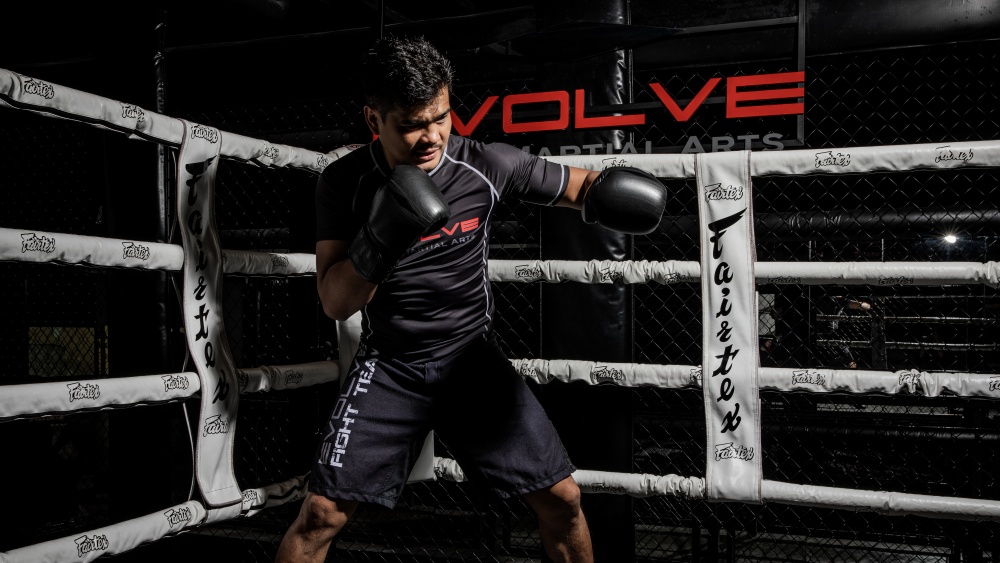
The first thing you’ll need to do is to get the right gear to take part, but luckily, that’s the easy part, and it won’t break the bank. At first, all you’ll need is some comfortable, loose-fitting clothes that will allow you to move freely and do what your Boxing instructors ask. Shorts and a T-shirt are fine, or you can put on a tank top, spats, or anything else you feel good in.
If you want to look the part and wear the ideal apparel, invest in some quality shorts. These are usually made from nylon or satin, and are cut off about halfway up the thighs to reduce any friction to ensure you can move with ease. Plus, there are infinite combinations of colors and styles available, so you can choose a design that suits your style and personality.
Gear Up
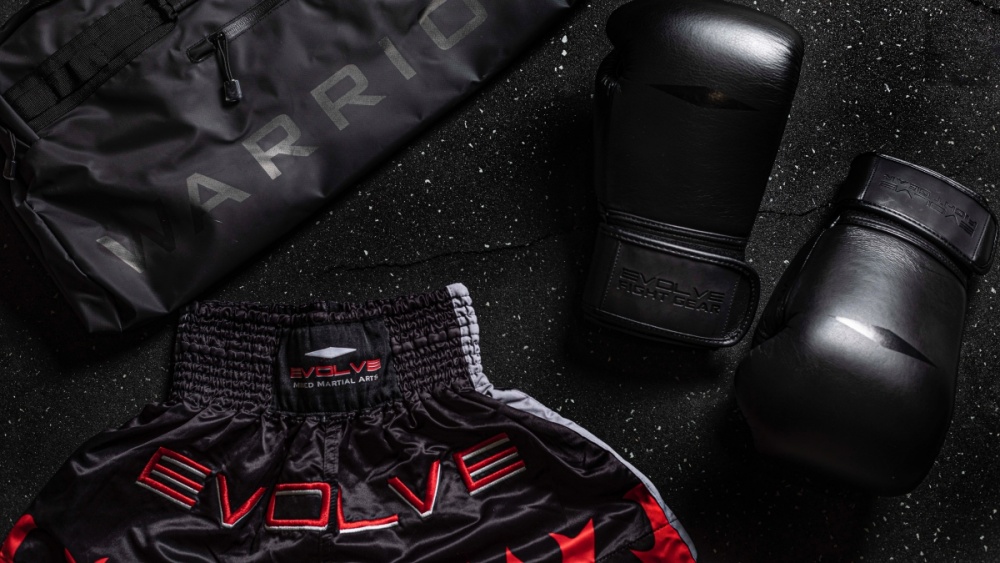
As a beginner, when it comes to equipment, you can get away with turning up empty-handed, but we would not recommend that beyond your very first session or two. Though you might be able to borrow some boxing gloves, you will not want to make a habit of it.
It does not cost much to pick up a pair of new gloves, or you could set yourself up for the long-haul with a pair that is built to last from the Evolve Fight Gear store. There are plenty of other sizes available, but for first-timers who are not yet ready to start sparring, 10oz or 14oz is ideal. A good pair of leather gloves could help to protect your hands from the impact of bags and pads for years.
You’ll also want to get some hand wraps, which martial artists use to protect their hands and wrists. If you’re new to combat sports, ‘traditional’ wraps might seem a bit confusing, but you’ll be binding your wrists and knuckles in no time with a bit of practice and our expert guidance.
Of course, that’s not all you’ll need as you progress in your Boxing journey. Mouth guards and groin guards are all essential as you progress to more advanced drills and sparring, but you won’t need to worry about investing in these until you’ve come to grips with things.
Chapter 11: Etiquette And Tips For Your First Class
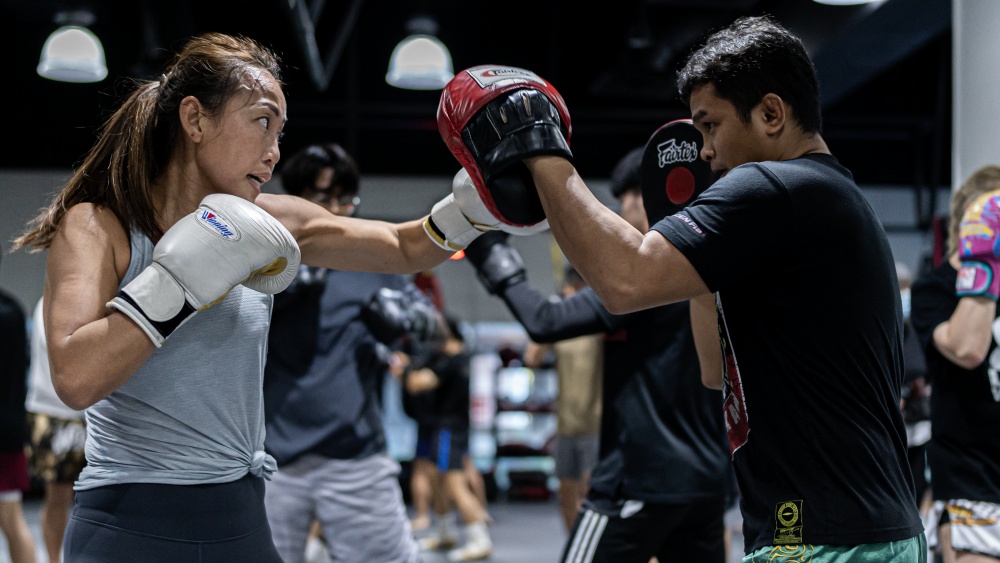
Boxing gyms can be intimidating for newcomers, but you will find they are welcoming places if you conduct yourself the right way.
The way you conduct yourself comes down to one thing – respect. All martial arts are built on this value that has run through them for thousands of years. Despite the long history, this is a simple concept. As long as you recognize the rules and appreciate everyone in your class, you can’t go wrong.
In this chapter, we’ve come up with some tips on what to look out for while training at the Boxing gym. Sticking to these guidelines will show the appropriate respect to your coaches and training partners, and will help you fit right in wherever you train.
Turn Up On Time
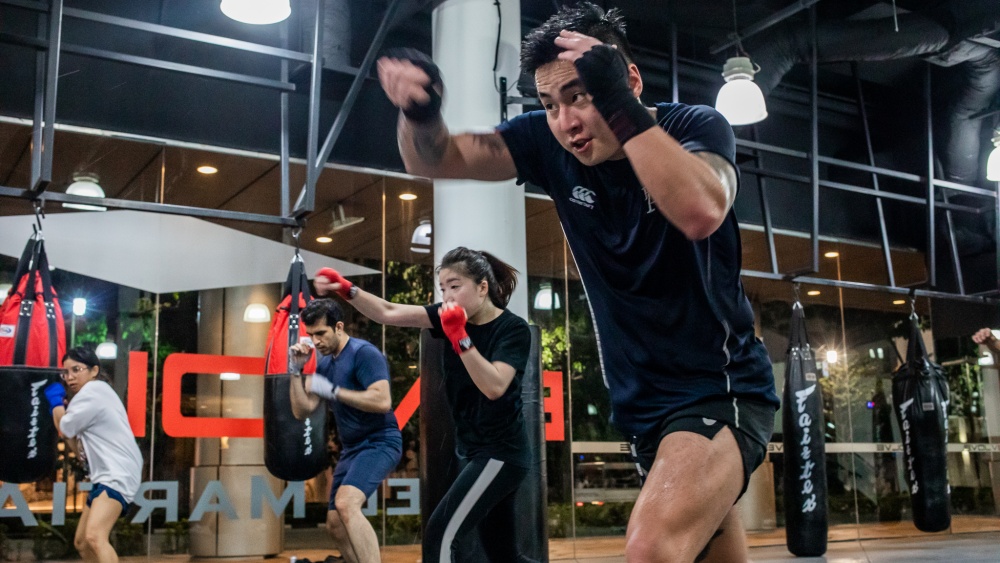
Make sure you arrive at the gym in time for the start of the class, ready to train.
It would be considered rude or disrespectful for you to turn up late to a job or social engagement, so why should martial arts practice be any different?
Whether you’re training to compete or you’re just a Boxing hobbyist, you owe it to your coach, your teammates, and yourself to be punctual.
If you run onto the mats five minutes after the start of class, you’ll disrupt the lesson and will waste everyone’s time while they wait for you to catch up on what you’ve missed.
You’re also likely to miss valuable warm-up time, which could lead to injury.
Some instructors may not even let you join a class if you miss the start. Others might allow you to join in, but not before you pay the price for your lack of punctuality. Want to avoid 50+ burpees? Arrive when you’re supposed to.
The best practice is to turn up a little early, giving you an ample amount of time to stretch, wrap your hands, and even catch up with friends before it’s time to get serious.
Listen To Your Coach
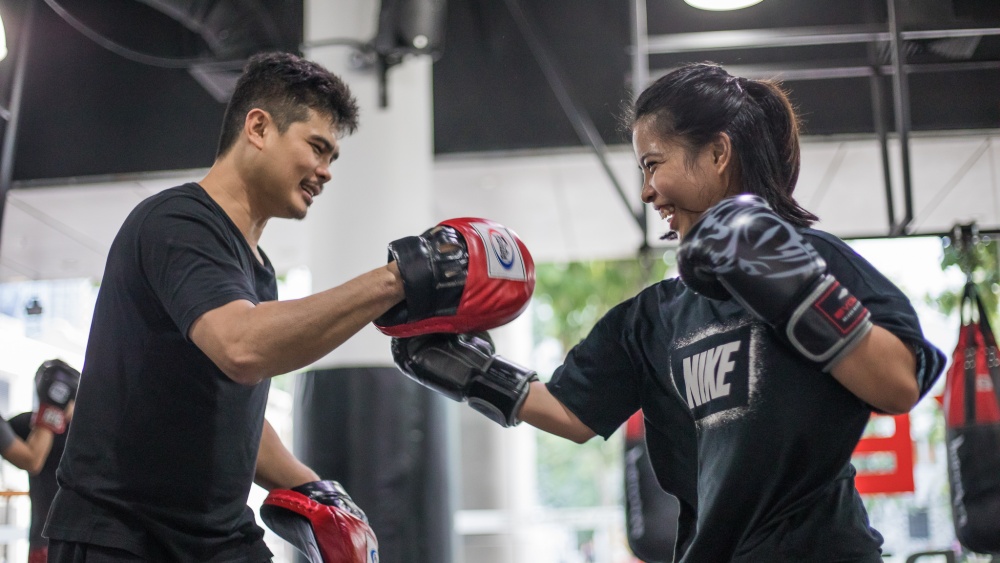
It’s just plain rude to not pay attention to your coach. They are the fountain of all your martial arts knowledge, and they demand your respect.
Most trainers don’t mind having to explain a technique or concept several times – especially if it’s difficult, complex, or unfamiliar – but not if it’s because you didn’t listen to them the first time.
You can chat about what you saw on TV last night after class, not while your instructor tells you what to do or how to do it.
If you’re not focused on what you’re being shown, not only will you make your coach angry, you’ll end up doing something wrong. That could mean you pick up some bad habits that could stay with you for a long time.
You’re forking over your hard-earned cash to learn from your coach, so try to absorb whatever knowledge they share with you.
Treat Your Training Partners How You’d Want To Be Treated
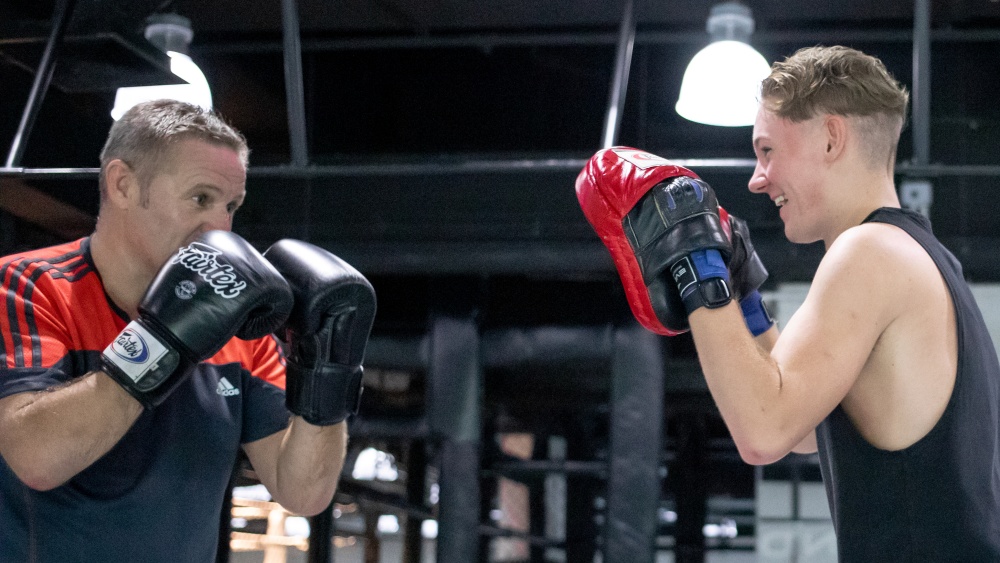
Boxing gyms should create a welcoming environment where anyone can come and learn the sweet science, so help to keep it that way.
In mixed-ability sessions, you might be partnered with someone with less experience, so don’t get frustrated with them if they can’t hold pads for your combinations.
Everyone was a beginner once, so remember what it was like when you started. Try to guide them through the process. Once they get the hang of things, they’ll become a valuable training partner.
If you’re a newbie and pair up with someone who’s far more experienced, try to relax and listen to their advice.
Overall, just be friendly to everyone. It’s not okay to be antisocial or behave inappropriately anywhere. If you do so in the gym and dissuade anyone from coming back, you might be asked to leave too.
Keep It Clean
If you don’t look after your personal hygiene, no one will want to train with you.
Make sure you air out or wash your equipment after every session so it’s clean and bacteria-free when you step back onto the mats.
Keep a towel handy in the gym so you can wipe excess sweat away before you cover all your friends. If you have long hair, keep it tied back and out of the way.
Also, wash your hands before you practice clinching. Smell your hands when you take your gloves off to find out why!
You should also keep your fingernails and toenails trimmed. They can also scratch, or worse. There are also horror stories about serious injuries being caused by untrimmed talons.
Finally, if you have any cuts, make sure they’re covered up before you step on the mats, and dress them immediately if they get exposed.
Tips For Your First Class
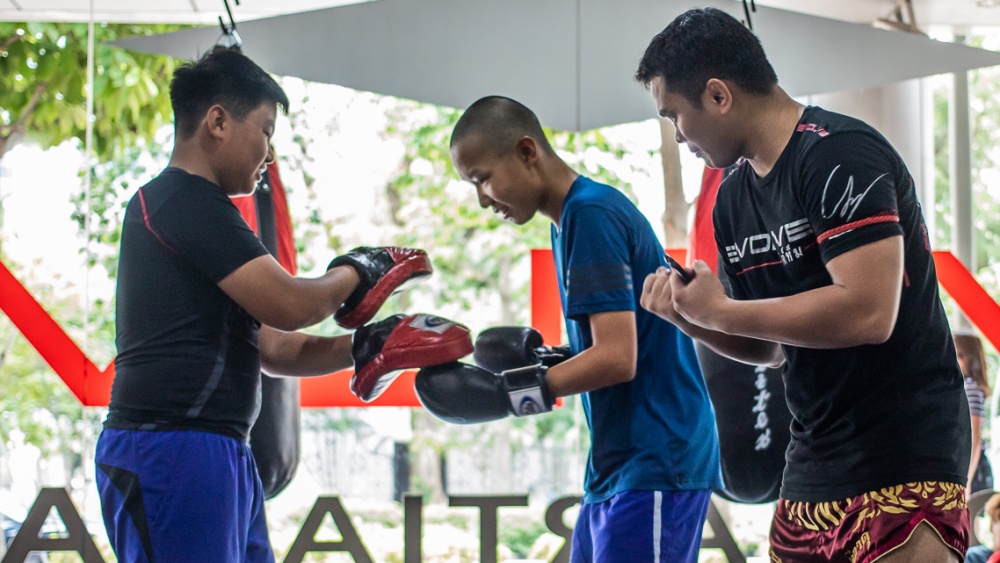
If you’ve set foot in a Boxing gym as a newcomer and feel intimidated when you step into a new gym for the first time, you’re not alone. However, there’s no need to worry. You’ll be welcomed as a new member of the martial arts family as soon as you step onto the mat.
While you get your feet wet in your new martial arts family, keep these things in mind to help yourself adjust and adapt.
- Get To Know The Gym And Instructors:
On your first day, turn up a little early to get to know the layout of the gym – where to sign in, where to get changed, and where everything is kept. Also, don’t be afraid to introduce yourself to your instructors – they won’t bite! If you’re nervous, you can explain that it’s your first time, and you can be sure these experienced experts will help you ease into things. - Don’t Be Scared To Ask Questions:
Don’t understand something? Worried you’re not doing something right? Don’t sweat it. Just ask one of the coaches or even one of the other people in the class to help you out. The atmosphere is always supportive and everyone around you knows what it feels like to start out. Everyone was a beginner once. - Give It Your All:
Whether you’ve taken up Boxing to get fit, train towards competing, or just to try something new, make the most of your time on the mats. If you can’t do something right at first, don’t give up! Practice makes perfect, and a good attitude will go a long way with your instructors. - Relax And Have Fun:
While you should try your best in Boxing class, no one expects you to be as well-conditioned as Drian Fransisco, hit as hard as Manny Pacquiao, or as technical as Floyd Mayweather. While you should try your best, make sure you go at your own pace too. It’s best to take your time and stay loose. That will help with your technique and help you to learn. All that should contribute to a great time.
Back to Table of Contents
Chapter 12: Roadwork, Bag Work, And Training
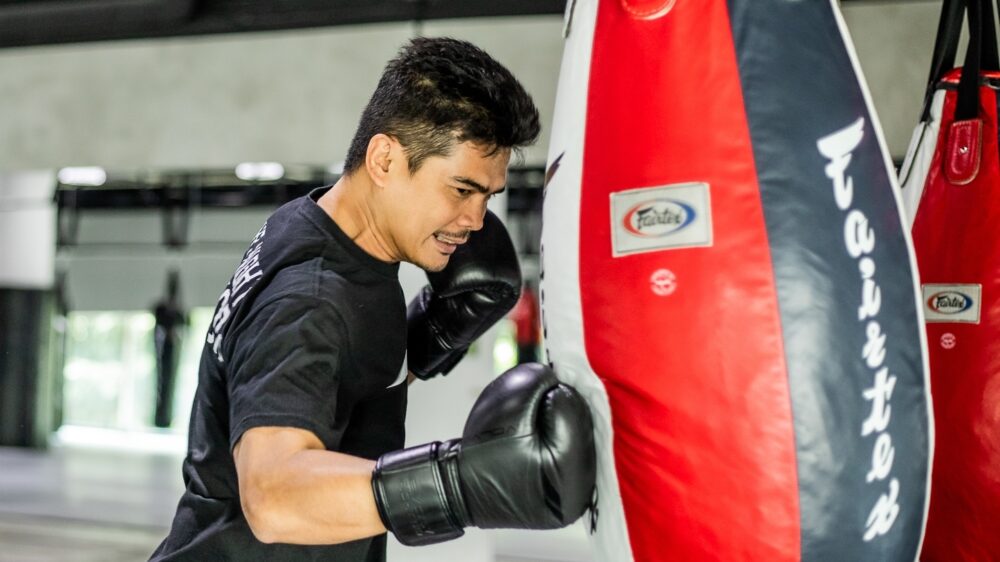
Being a boxer requires a great deal of hard work, discipline, courage, and dedication to enjoy any success inside the ropes. It’s not easy, but nothing that’s worth it ever is, right? That said, if you are willing to put in the effort in the gym, there is nothing stopping you from competing at any level.
Everybody starts at the bottom. Training is the first stage. However, when it comes to getting yourself in shape, you must remember not to go too crazy. Rest is as important as exertion. Allowing your body to rest will ensure that you are allowing yourself the time to grow, the right way.
Road Work And Shadowboxing
Most fighters hate to hear this, but as far as overall fitness is concerned, nothing beats good, old-fashioned roadwork. Running will build your stamina like nothing else. Long distances and sprints will help you fight at a much higher pace for longer periods. You should try to run for around 20-30 minutes at least 2-3 times a week, initially aiming for around 5-10 miles per week, gradually increasing your distance and intensity.
Start slow and sprint sporadically using trees and lampposts as checkpoints so that you can get used to recovering quickly from exchanges. Too much running can damage your feet and joints, so run on grass when possible and make sure you have decent running shoes. Switch it up with swimming sessions to help you to loosen up and work different muscles. This can help your body get used to operating without much oxygen coming in.
Pressed for space? Skipping and shadowboxing are also great ways to exercise when you don’t have much room. These methods will also improve your rhythm, footwork, and overall fitness. Ideally, you should be shadowboxing as often as possible, preferably with a mirror to work on your form.
There are many videos online that teach footwork drills to improve your movement and coordination, which you can incorporate into your shadowboxing. You can also add training with light dumbbells into the mix. Try to squeeze in at least 20 minutes of skipping or shadowboxing every day.
If you are concerned about strength and conditioning, try to focus on lifting body weight as opposed to isolated exercises. Lifting your body weight will increase your core strength and improve your balance. Additionally, try to make explosive movements when doing basic exercises such as push-ups. Kettlebells and medicine ball exercises are also great for improving your overall power.
Bagwork
The importance of bag work should not be overlooked, especially for beginners. Bag work can help you iron out holes in your technique and become more comfortable throwing different combinations, as well as improving your overall strength and fitness. There are a wide variety of punch bags that come in many different shapes, weights and sizes that will benefit your training and progress in different ways.
Most punch bags hang by a bracket, but you can also get free-standing ones that are weighted at the bottom. If you are faced with a choice between the two we recommend a hanging one, as the swinging motion will help you get used to fighting a moving target.
The standard hanging punch bag provides plenty of padding and doesn’t have much weight behind it, meaning you can hit it hard and often without worrying too much about the wear and tear on your hands and joints.
You should use a standard bag mainly to focus on your punch output and overall endurance. You can also get curved ones that are perfect for practicing hooks and body hooks on. Use the uppercut bag to work on hook and uppercut combinations, as doing them on a standard bag could lead to a wrist injury. Many gyms use aqua uppercut bags that are easier on the joints and can be made heavier by adding water, which is perfect for home workouts.
The heavy bag will build your overall strength and punching power but be warned that it is also stressful on the hands and joints, especially at a beginner stage. To combat this, try to limit your heavy bag work to once or twice a week and do no more than three rounds a session. Any more than this and you’ll risk injury. If you feel any pain or discomfort, particularly in your hands and wrists, stop and move onto something lighter.
Don’t Forget The Speedball
The speedball will improve your hand-eye coordination and is great to warm up with or to use on days where you’re going light. Double-sided ones are faster and trickier to use but will help sharpen your movements and reflexes. The Maize ball will help you with your head movement and defensive maneuvers, as well as time your hooks and uppercuts.
Ideally, you need several sets of gloves of varying weights and made of different materials. You need to be using well-padded gloves for the heavy bag, and softer gloves for sparring. Heavier gloves will improve your muscular endurance, but it’s good to have a lighter set to get used to the kind of gloves you will likely be wearing in a fight so you can measure your punch output more accurately.
Sparring And Padwork
Ideally, you want a training partner at least once a week to do focus pads with. These are great for improving hand-eye coordination and working on different punches and combinations. You and your training partner can take it in turns – ensure to have the pad holder throw jabs and hooks into the combos so that you can practice your slips and rolls.
Start slowly at first and get used to finishing your combinations with the most powerful punch you can muster. It is also worth it to ensure that the pad holder wears a body shot belt so you can incorporate inside fighting into your regime, as you will no doubt encounter boxers who specialize in this type of fighting.
When you are ready to spar, you will need a gumshield, head guard, hand wraps, and of course boxing gloves, preferably 16oz ones designed for sparring. Start slow and go soft – you can’t get better if you’re injured so just treat it as a learning experience. Also, remember that hard sparring should be kept to a minimum, such as three rounds, twice a month.
Always Remember
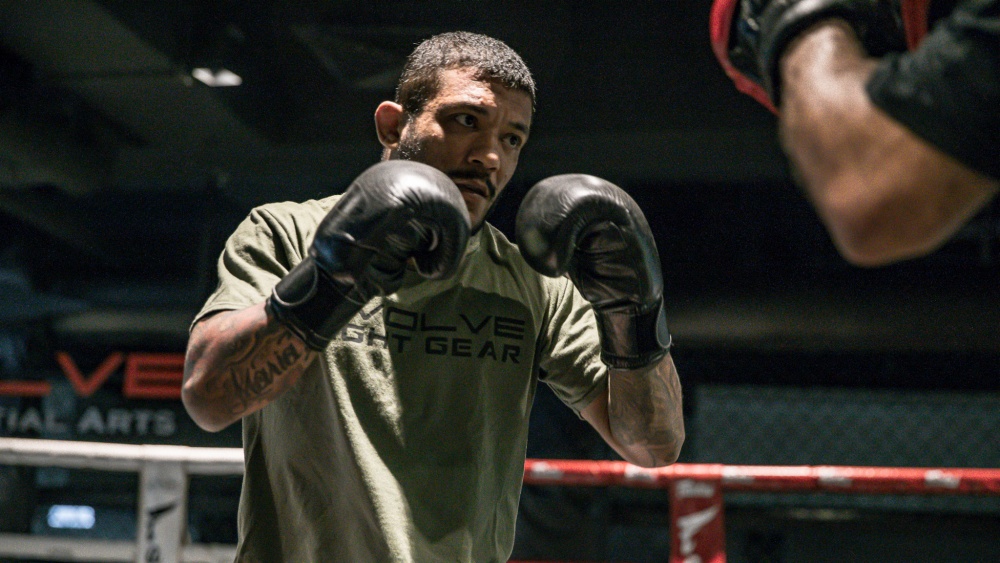
You have to keep in mind that your brain takes a bounce every time you get cracked, which generally is fine as long as you aren’t taking heavy hits several times a week. Hard sparring is good to test your endurance and how well you react to real pressure, but your brain is too valuable to play games with, so spar soft 80% of the time and save the heavy blows for fight nights.
As a beginner, it will take time for your body to become accustomed to preparing yourself for life as a boxer. As such, it is of vital importance to listen to your body and give it ample rest as and when it needs it. By all means, you should push yourself, but overtraining can lead to complications such as dehydration, fatigue, and injuries that can curtail your progression.
Chapter 13: Choosing A Boxing Gym
As the “Sweet Science” grows in popularity the world over, Boxing gyms are popping up everywhere.
Boxers are spoiled for choice when it comes to picking somewhere to train. If you don’t know what to look for, it might be difficult to decide what’s right for you.
Without expert knowledge, you could end up failing to keep up with a group of experts, or struggling to learn ineffective techniques from a con artist at a McDojo.
With our advice you should get everything you need to know about choosing the right place to learn Boxing – one that’s welcoming, teaches you the skills and values of martial arts, and will help you reach your goals.
Accessibility
Before we even get started with what makes a good gym, ask yourself whether you can fit the gym’s timetable of classes around the rest of your professional and social life. If you’re new to the sport and beginner’s classes clash with your shifts at work, it may not be the place for you.
Likewise, if you have to take three buses or drive more than an hour to get to and from training, are you prepared to make that trip multiple times a week?
If you’re a dedicated Boxer, you can work around these issues, but others may want to go somewhere that’s a bit more convenient.
Even if you are willing to rearrange your schedule or buy that travel pass, make sure you check out the rest of these factors to make sure it’s worth it.
Reputation
Now more than ever, it’s easy to get a good idea about what a gym is like before you even set foot on the mats.
If you see a busy room with a lot of smiling faces, the chances are that you’re onto a winner.
Not convinced? Just ask. A lot of gyms thrive on word of mouth, so talk to people and find out what they think of your prospective training center.
You can also go online to social media or martial arts forums to do some research and discover if your targeted training center is for you.
If its members are known as ‘The Murder Squad’ and have a reputation for taking no prisoners in sparring, you might want to look somewhere else for your introduction to Boxing.
Coaches
It’s important to avoid a charlatan and find an accomplished coach you like and respect.
It’s always worth doing your research to find out if the head instructor is infamous for boasting about fake or dubious credentials. These guys are to be avoided.
Finding a trainer with a record of professional fights and title wins is often a good sign, but you’ll never really know how good they are as a teacher until you experience their methods first-hand.
Your ideal coach is passionate about the sport and their students. They’ll also be patient, attentive, and try to divide their time equally among the people they teach.
If you can find someone who welcomes you to the gym for your first session, and then takes you through some of the basics before you start the class, you could be on to a winner.
Training Partners
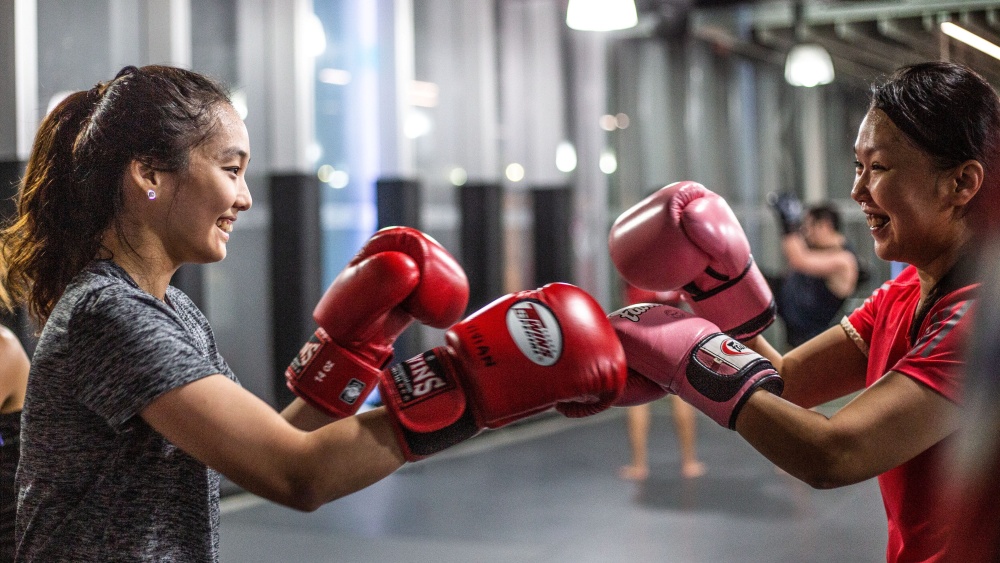
A good coach usually cultivates a gym with a welcoming environment and friendly training partners for you to practice with.
However, you need to consider more than just how friendly your teammates are when you commit to joining a gym.
It would be ideal if you can identify a good mix of skill levels among your new gym’s patrons.
As a beginner, it’s nice to train alongside others who are also starting out. That means you can share your martial arts journey and help each other out along the way.
At the same time, it’s still good to have some higher-level training partners. Training with people who are better than you will help your evolution as a martial artist because they’ll help you out and put you to the test when you’re ready to spar.
It’s also worth considering the size of your teammates. If you’re slight and hover around five feet tall, a gym populated by giants who measure over six feet and tip the scales at 100kg may not be for you.
While it’s not impossible to train with much bigger or smaller teammates, both you and your training partners will need to make big adjustments for pad work and sparring.
Some women may also prefer all-female classes, but this is not always possible at a lot of smaller gyms.
However, that shouldn’t put anyone off. Women’s participation in boxing is growing all the time, In fact, these days women have reaped various benefits of joining a boxing gym, so mixed classes are common, and most of the men are not half as scary as they look.
Equipment And Facilities

A gym full of brand new equipment is no substitute for quality in other areas.
Rows of heavy bags, a full-sized ring, and racks of brand-new mitts look great, but one coach with a sharp mind and a pair of pads is far more effective than one who has all the gear, but no idea.
With that said, it’s a bad sign if the equipment is bursting at the seams and leather is peeling off all over the mats. If the gym owner doesn’t look after that, do you expect them to look after their students?
You can at least expect for there to be enough pads to go around, and a few pairs of gloves to loan to beginners for their first few sessions.
However, you’ll want to quickly get your own stuff, because that second-hand kit smells really bad.
Your Goals
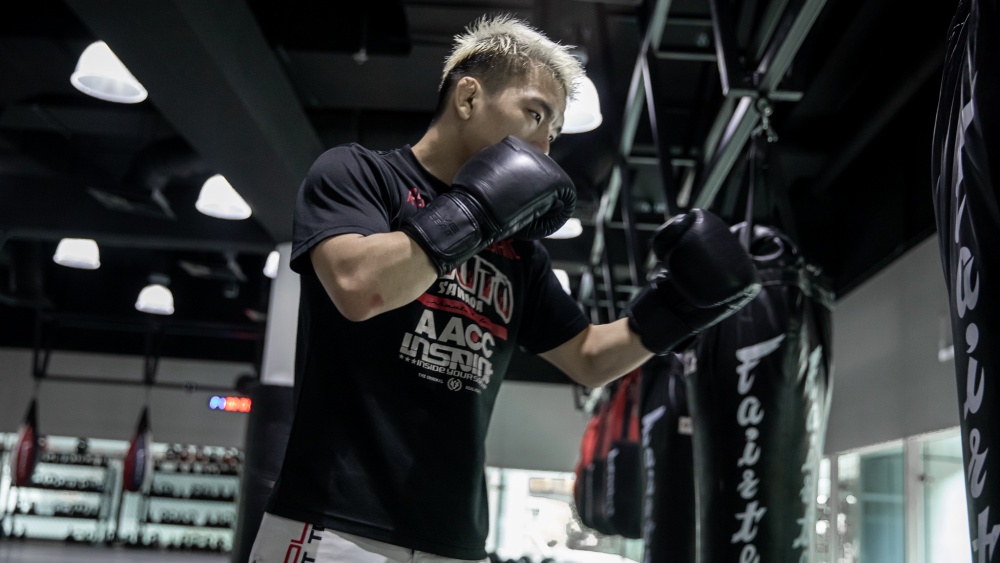
Finally, does the culture at the gym match up to what you want to get out of it?
By now, you’ll probably have established whether it’s a good place for beginners, but what about your plans beyond your first few weeks of training?
If you want to compete, ask whether that will be possible. If your gym is active in interclub competitions, regularly has fighters competing, or even promotes its own events, you’re in the right place.
You might also want to know if there’s an active social element among members. Boxing gyms are great places to make friends if you’re new to an area, so ask if there are regular events that everyone gets involved with.
Ready To Start?
We hope that we have answered all your questions in this comprehensive Boxing beginners guide! If you have yet to join the bandwagon of being a Boxer, we highly encourage you to get started today!
If you are in Singapore and looking for the best Boxing gym, consider joining us by signing up for a complimentary trial class now!
Book your complimentary trial class with our World Champions below!
If you have any other questions regarding Evolve MMA and the programs we offer, you can get in touch with our membership executives at the following locations:
Evolve MMA (Far East Square)
26 China Street
Far East Square #01-01
Singapore 049568
Phone: (65) 6536 4525
Evolve MMA (Orchard Central)
181 Orchard Road
#06-01 Orchard Central
Singapore 238896
Phone: (65) 6536 4556
Evolve MMA (KINEX)
11 Tanjong Katong Road
#02-52 KINEX
Singapore 437157
Phone: (65) 6288 2293
Evolve MMA (Clarke Quay Central)
6 Eu Tong Sen Street
#04-18 Clarke Quay Central
Singapore 059817
Phone: (65) 6226 2150
Evolve MMA (Star Vista)
1 Vista Exchange Green
#02-26A The Star Vista
Singapore 138617
Phone: (65) 6539 9590
